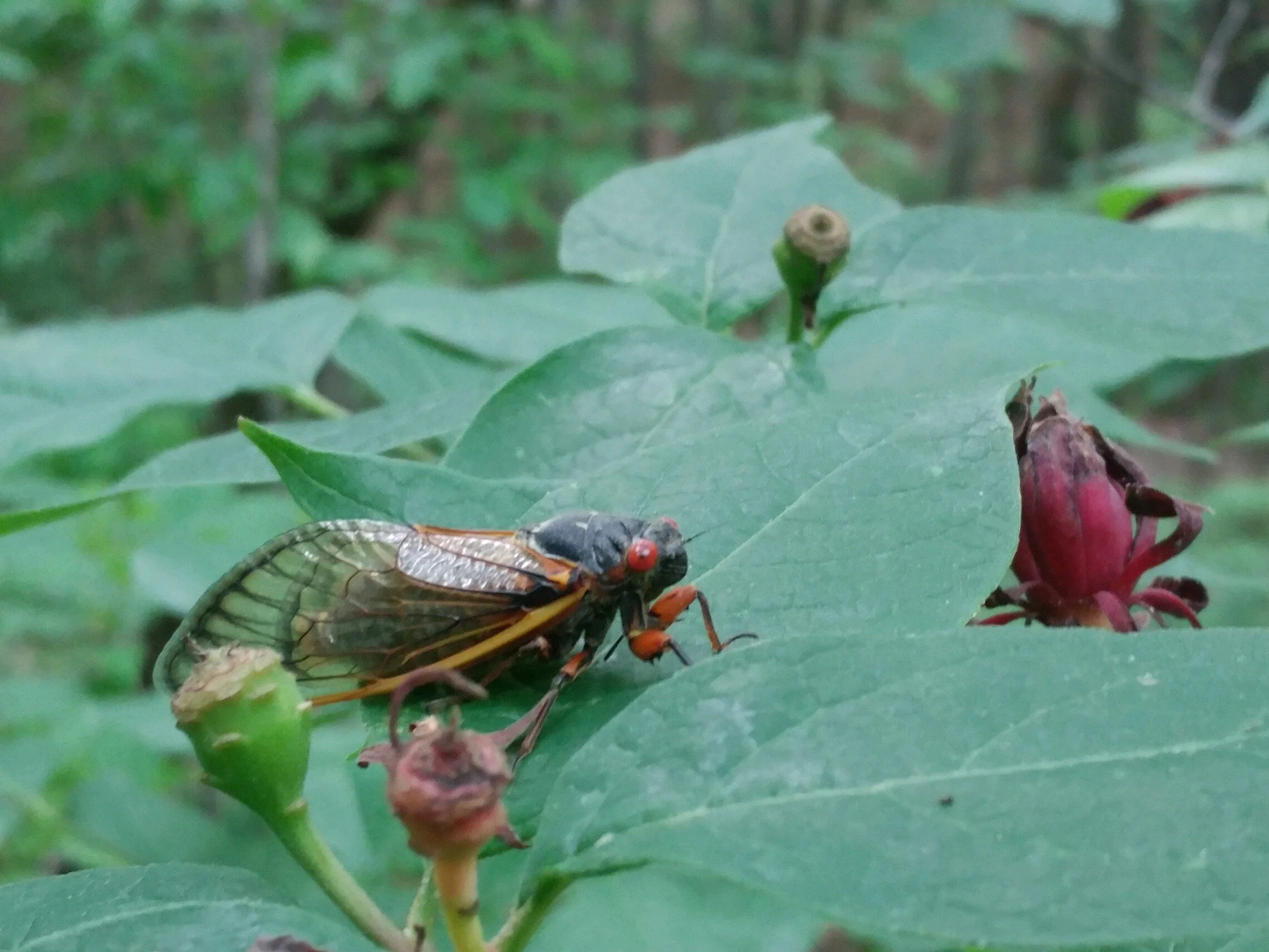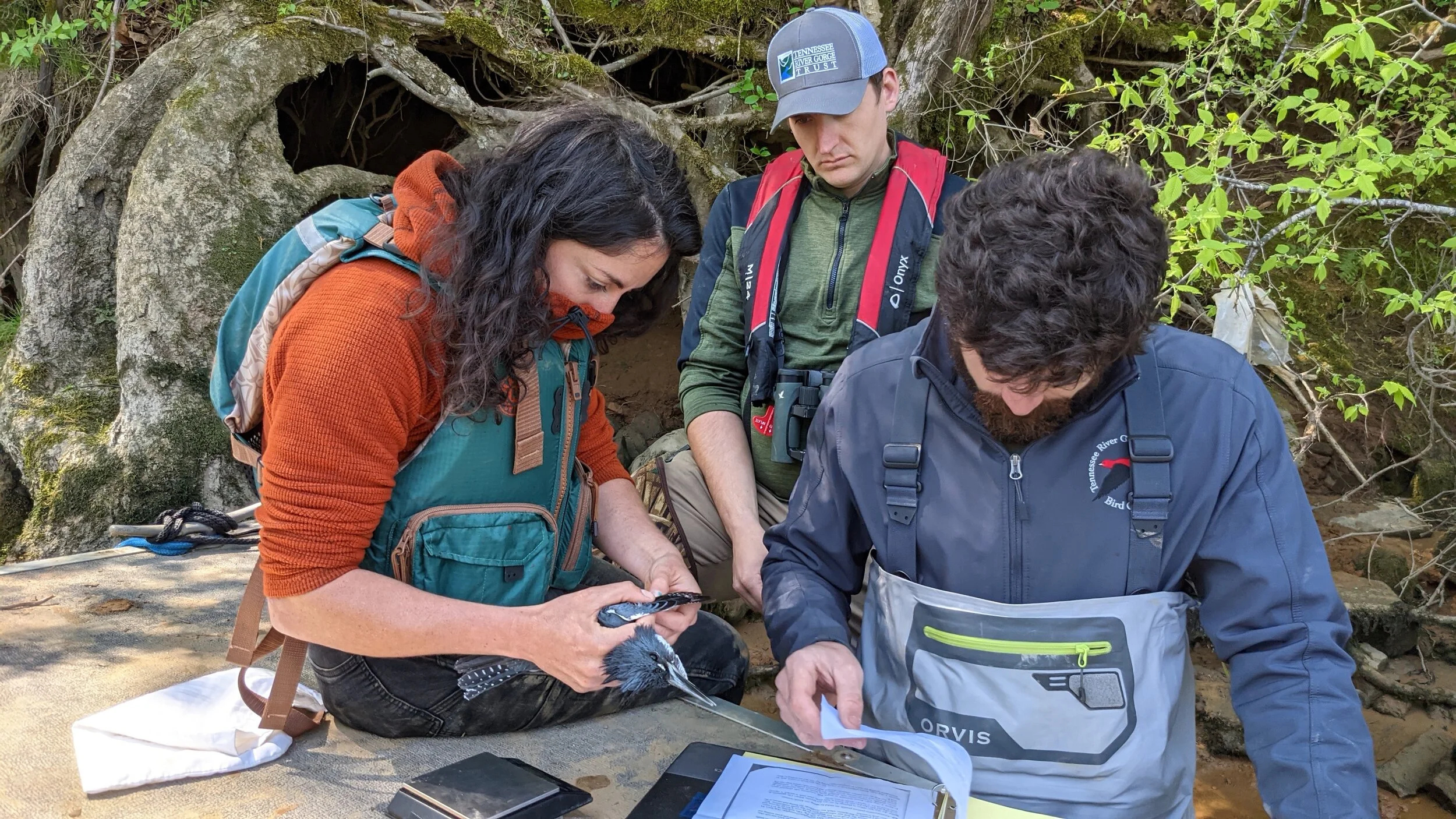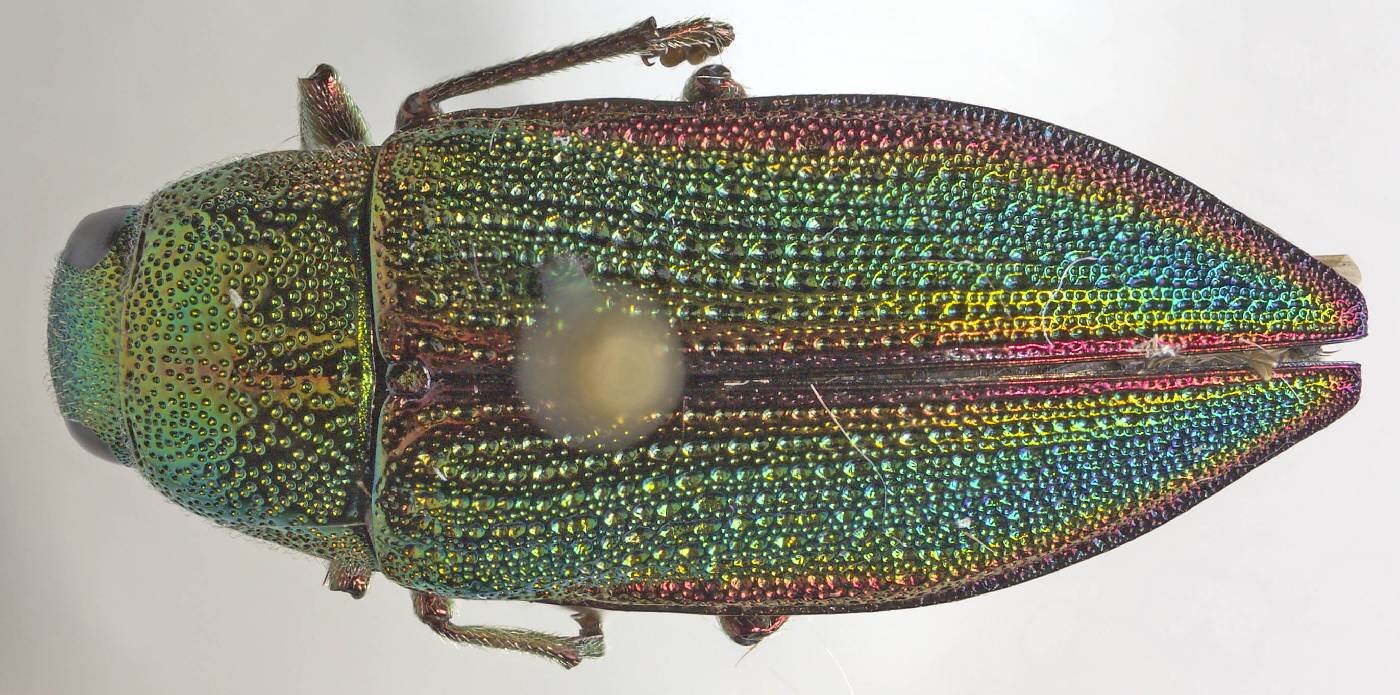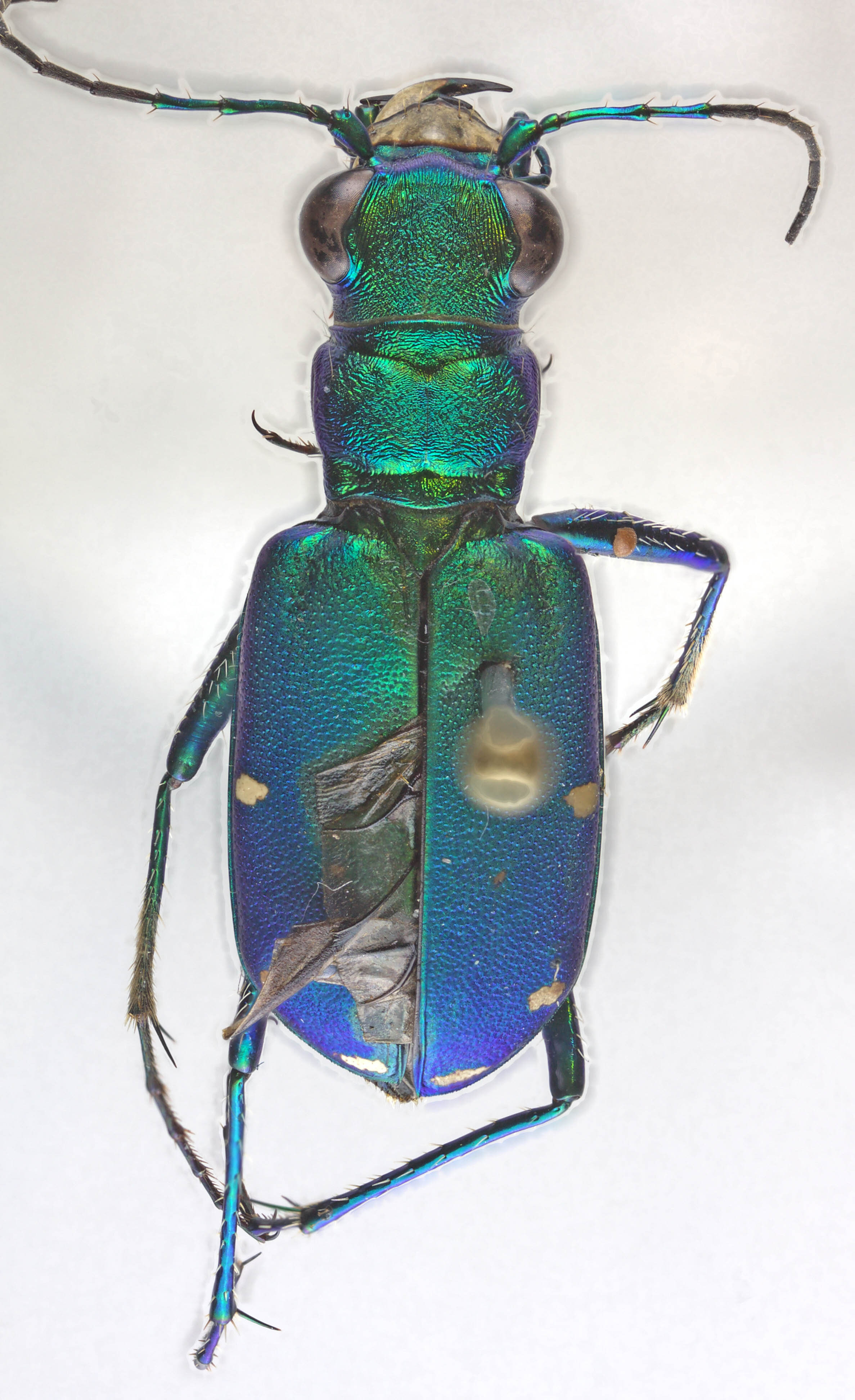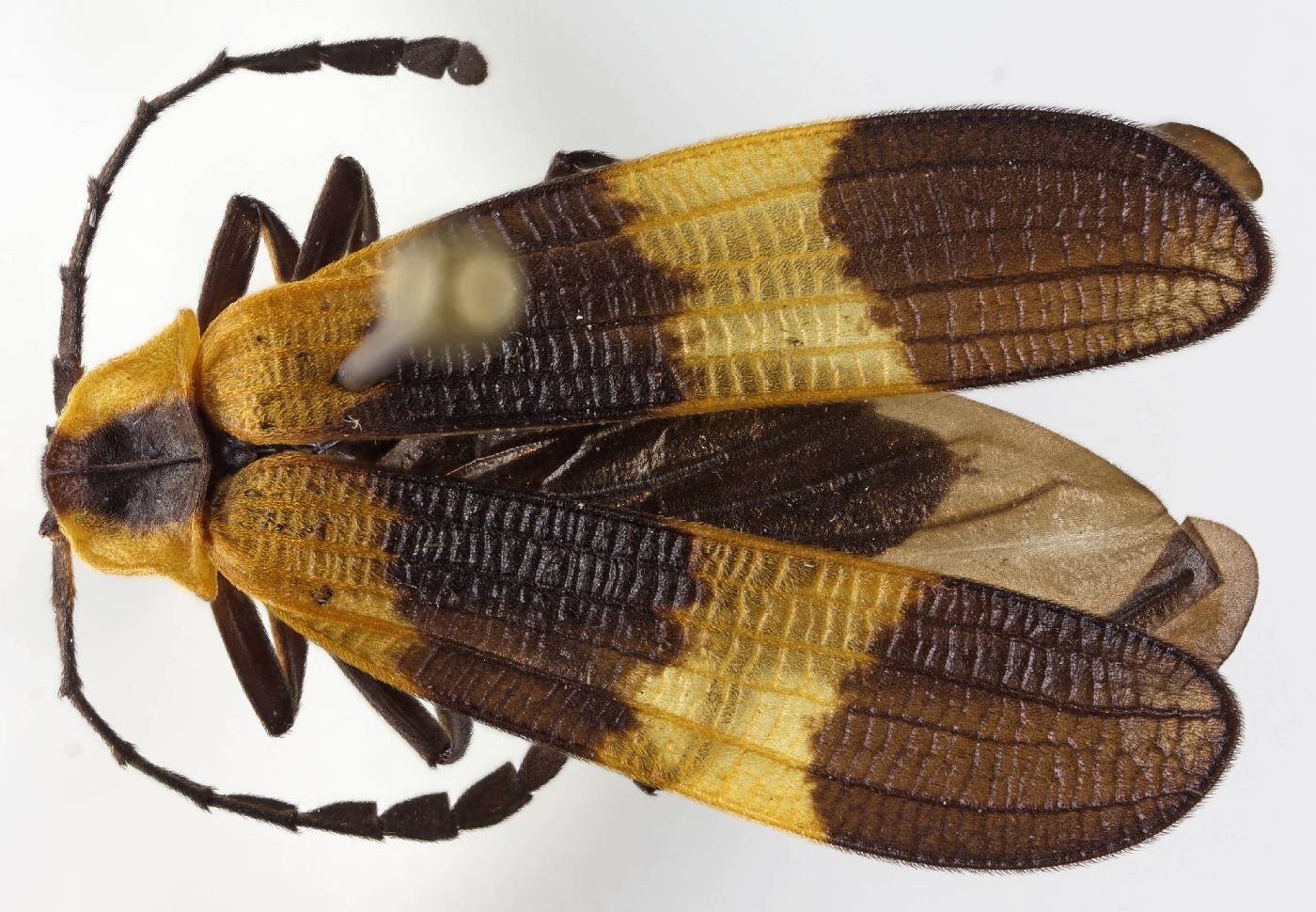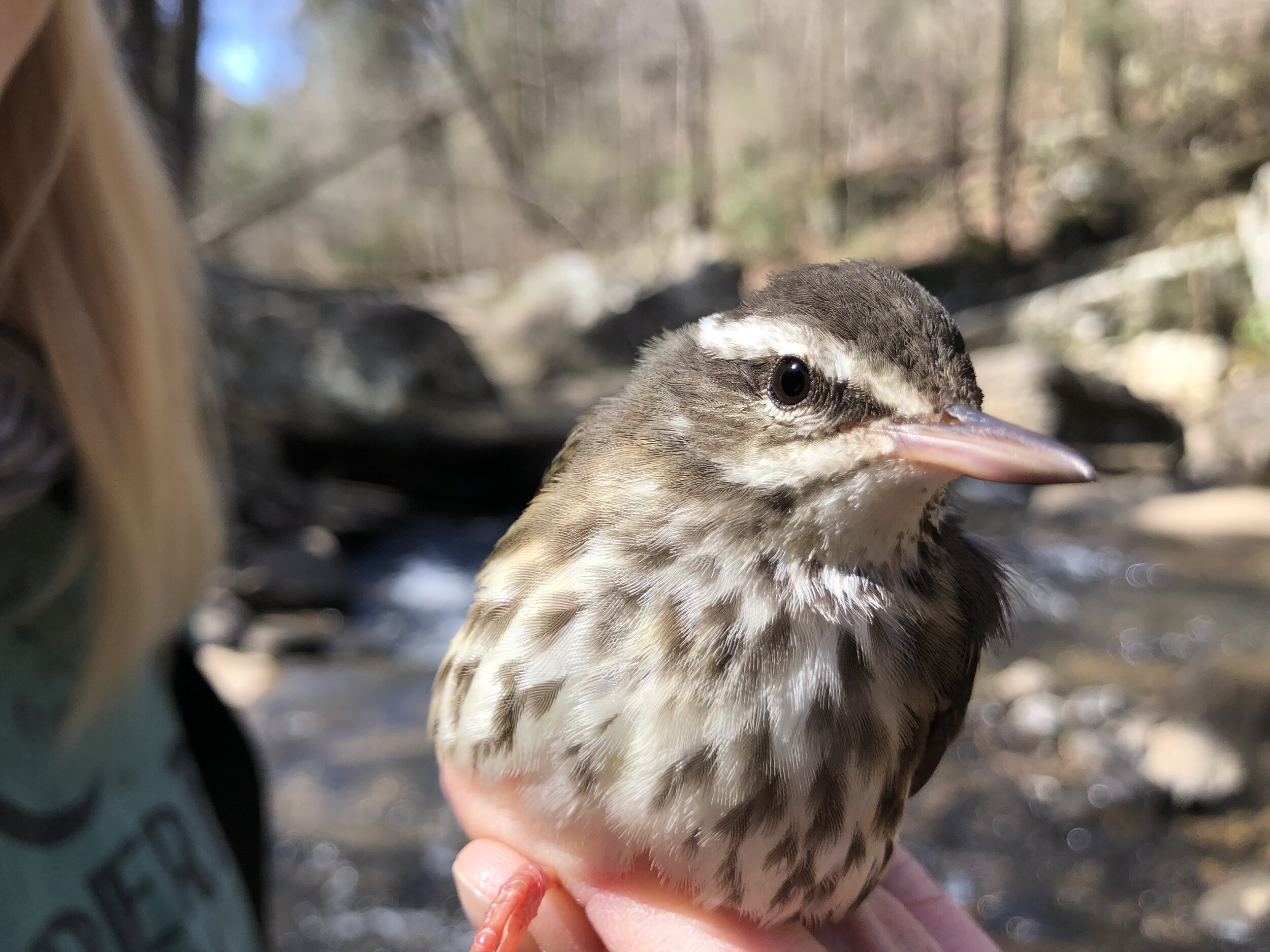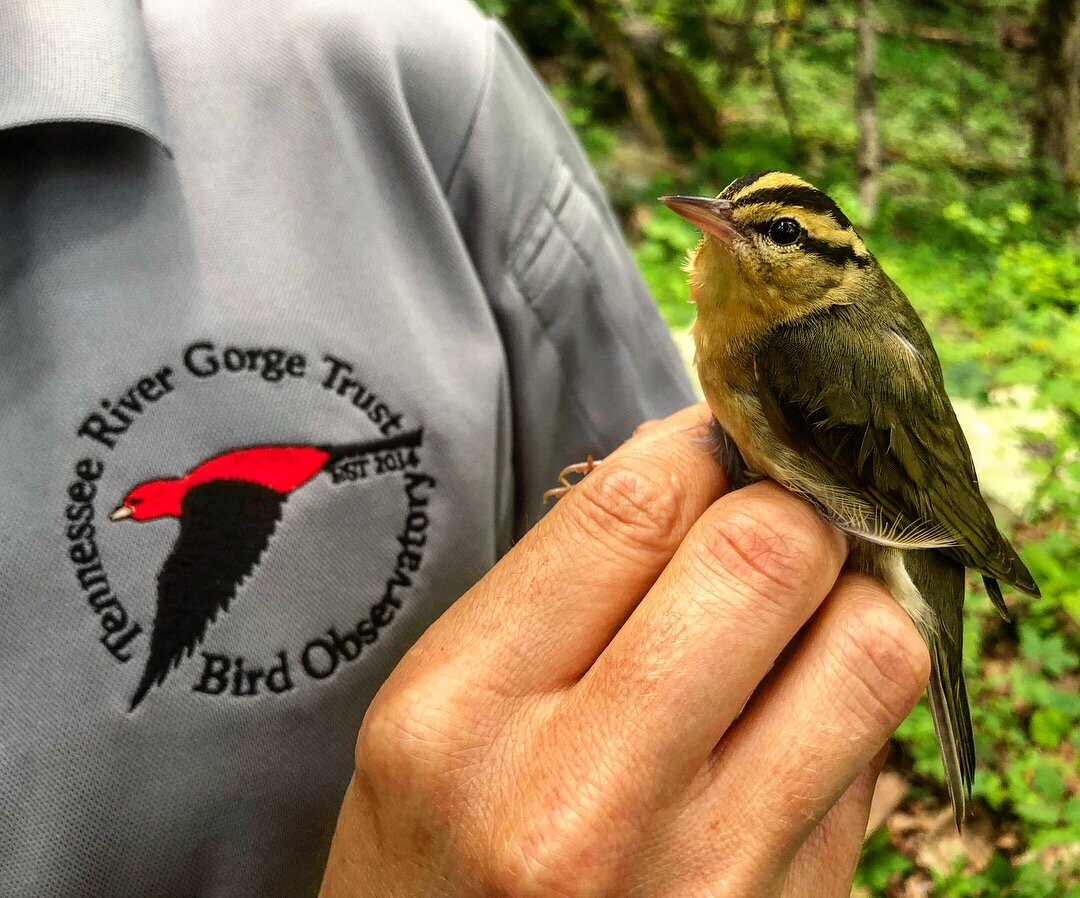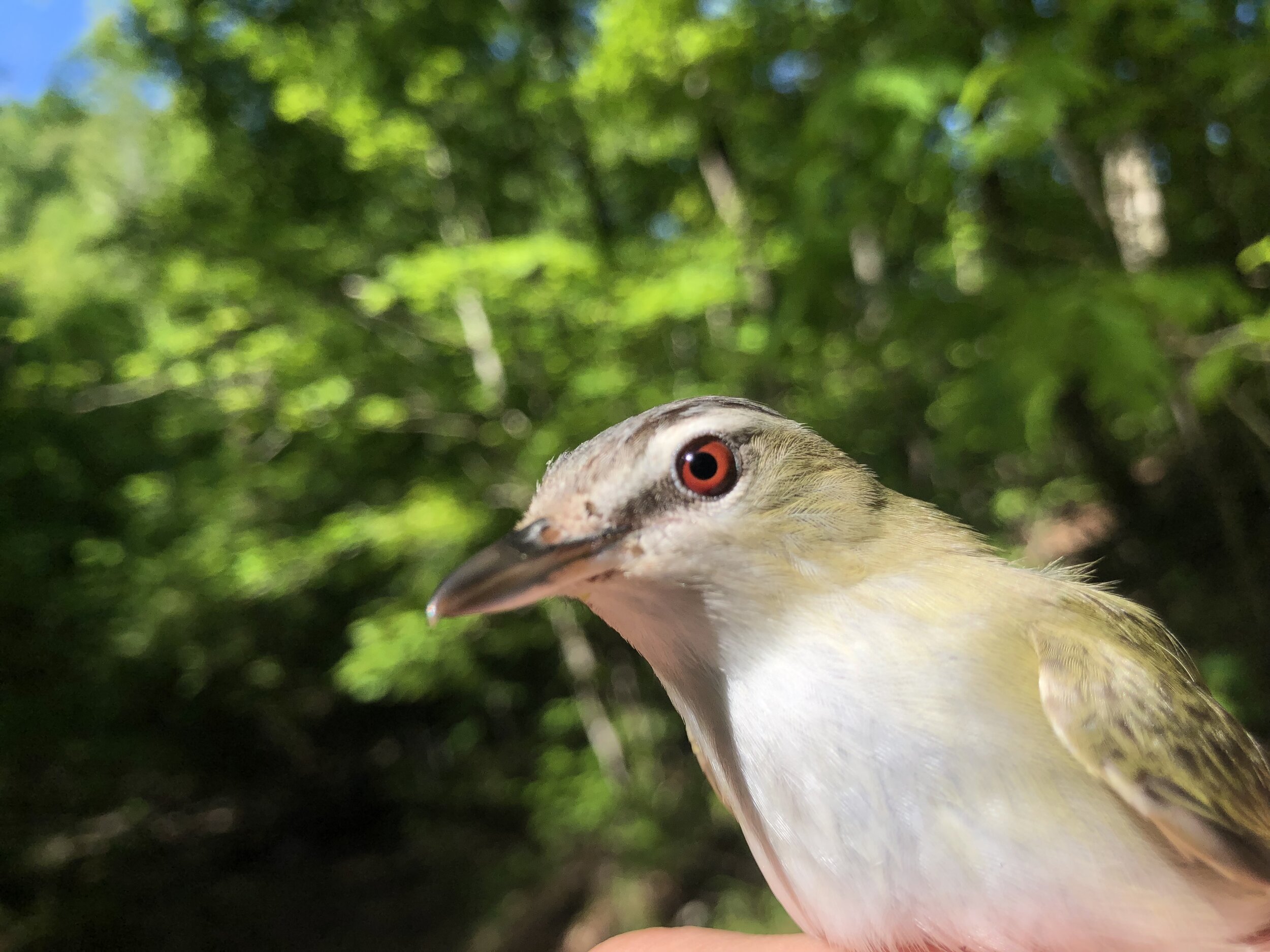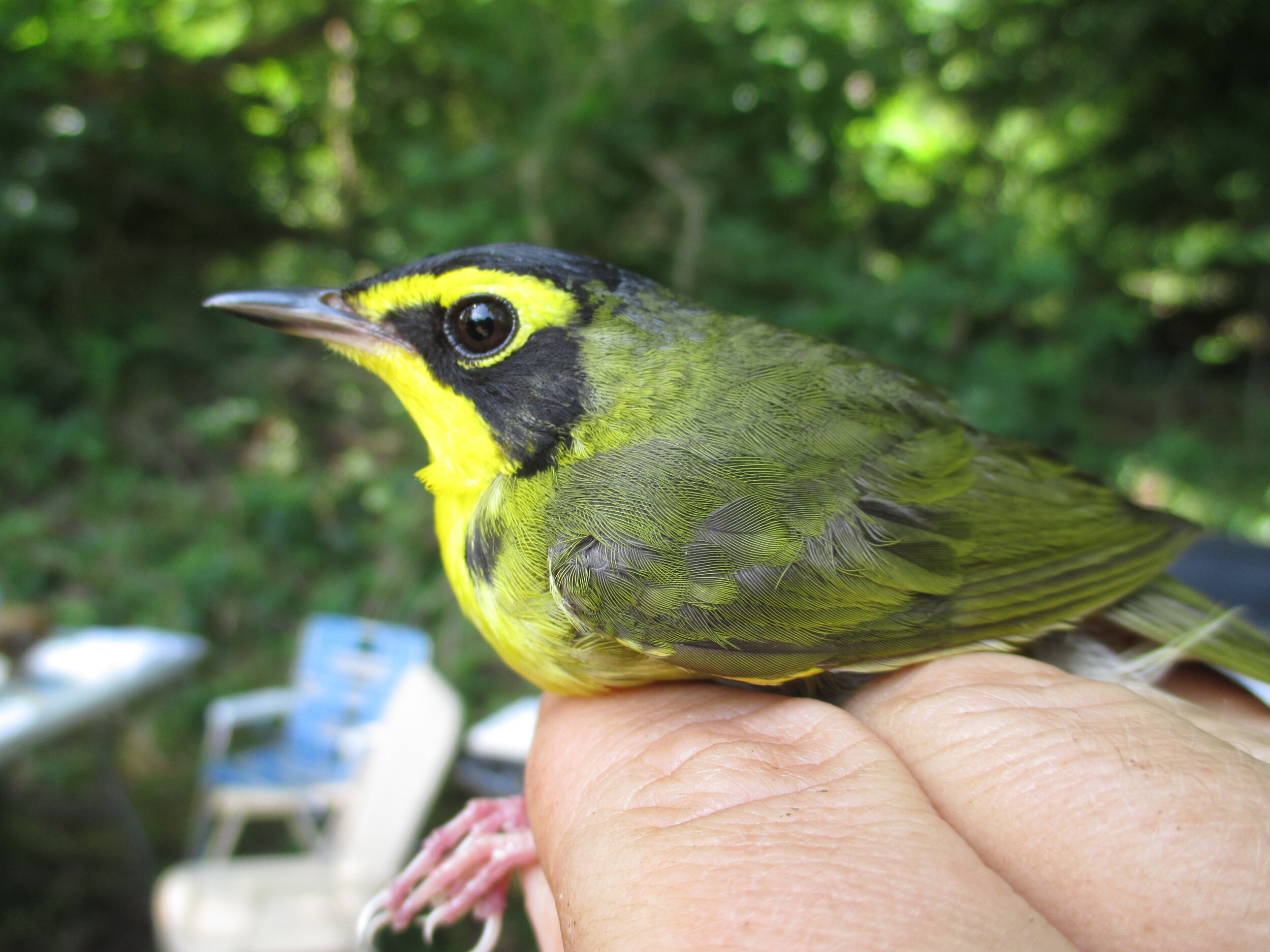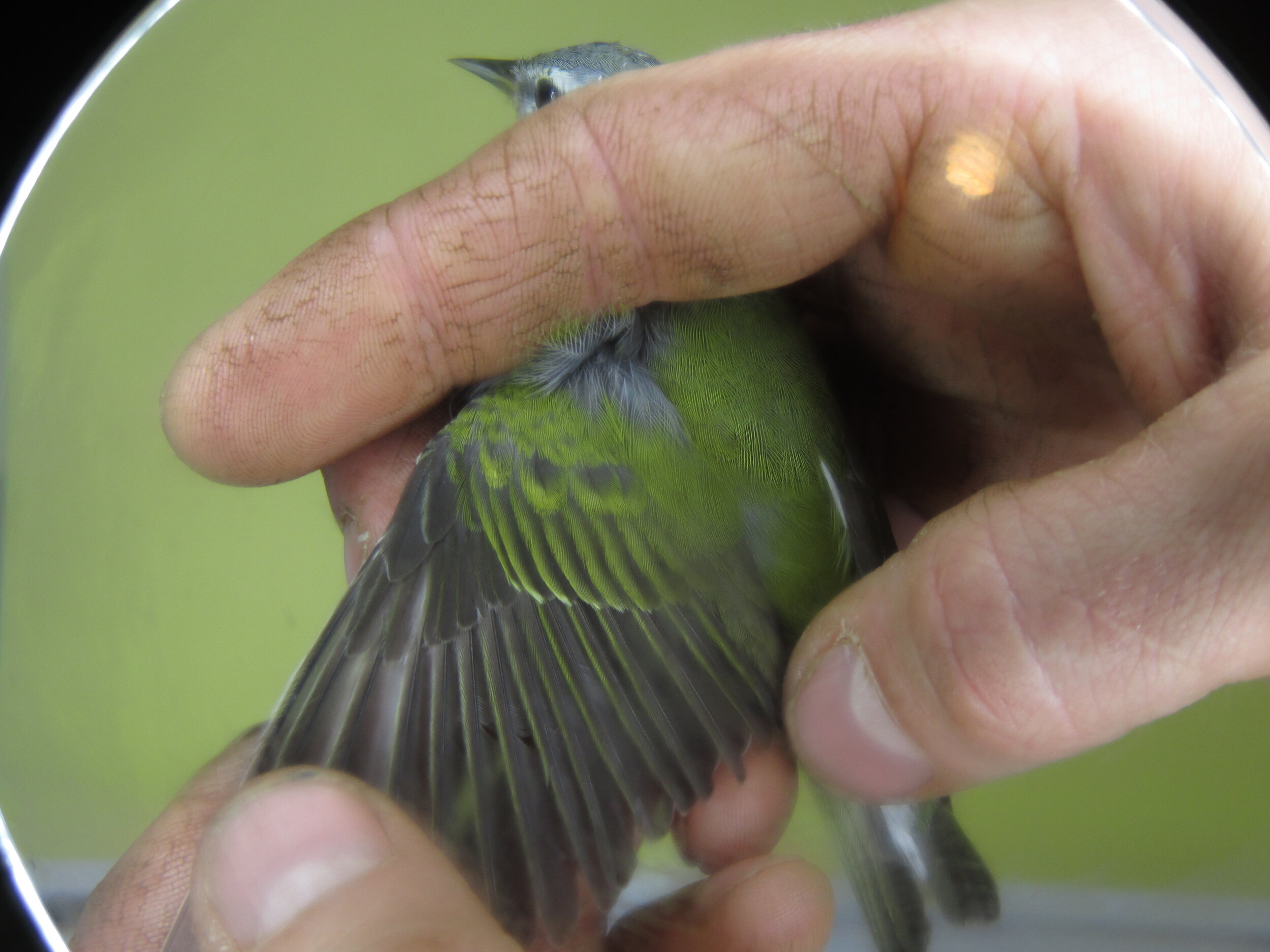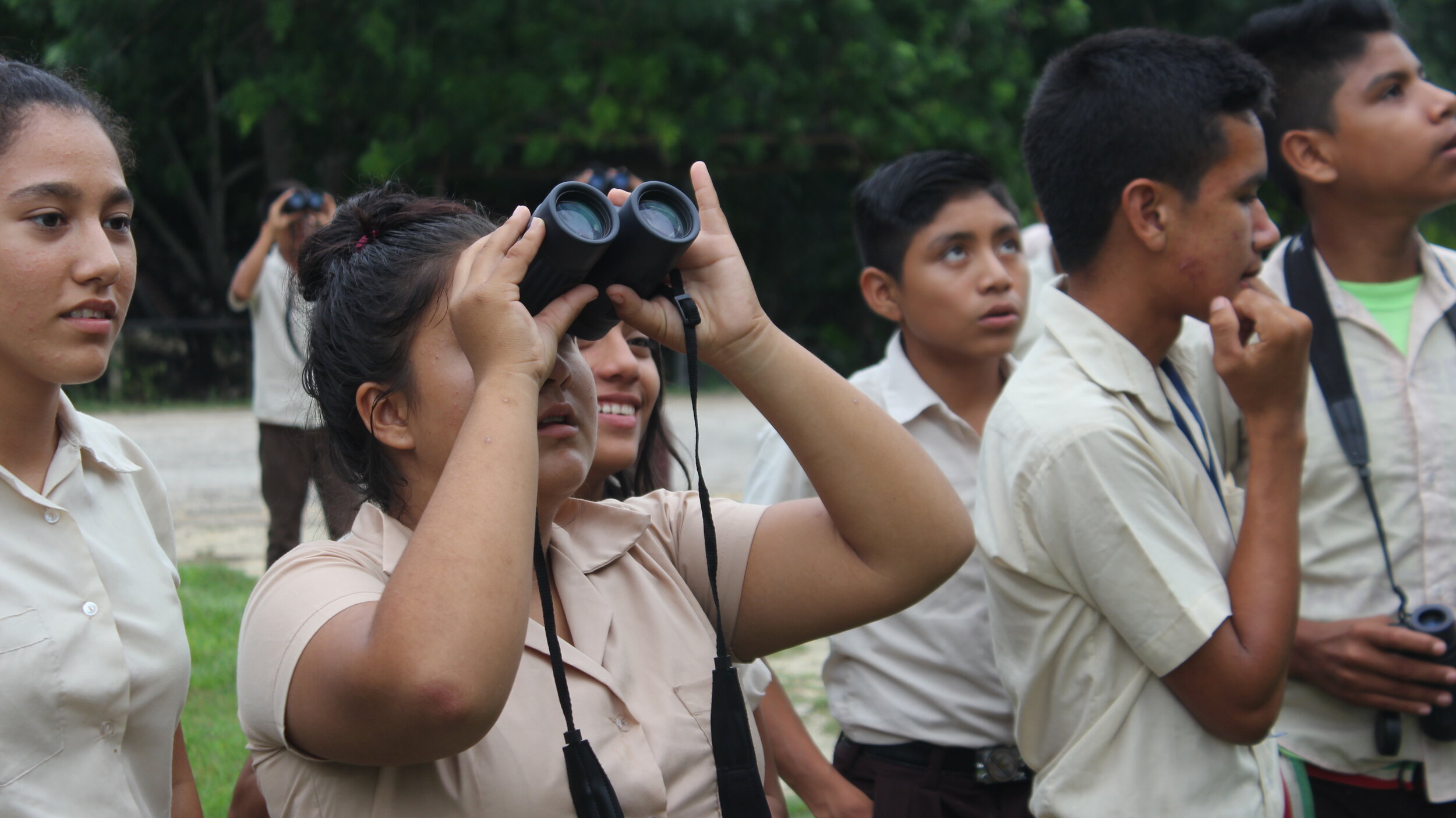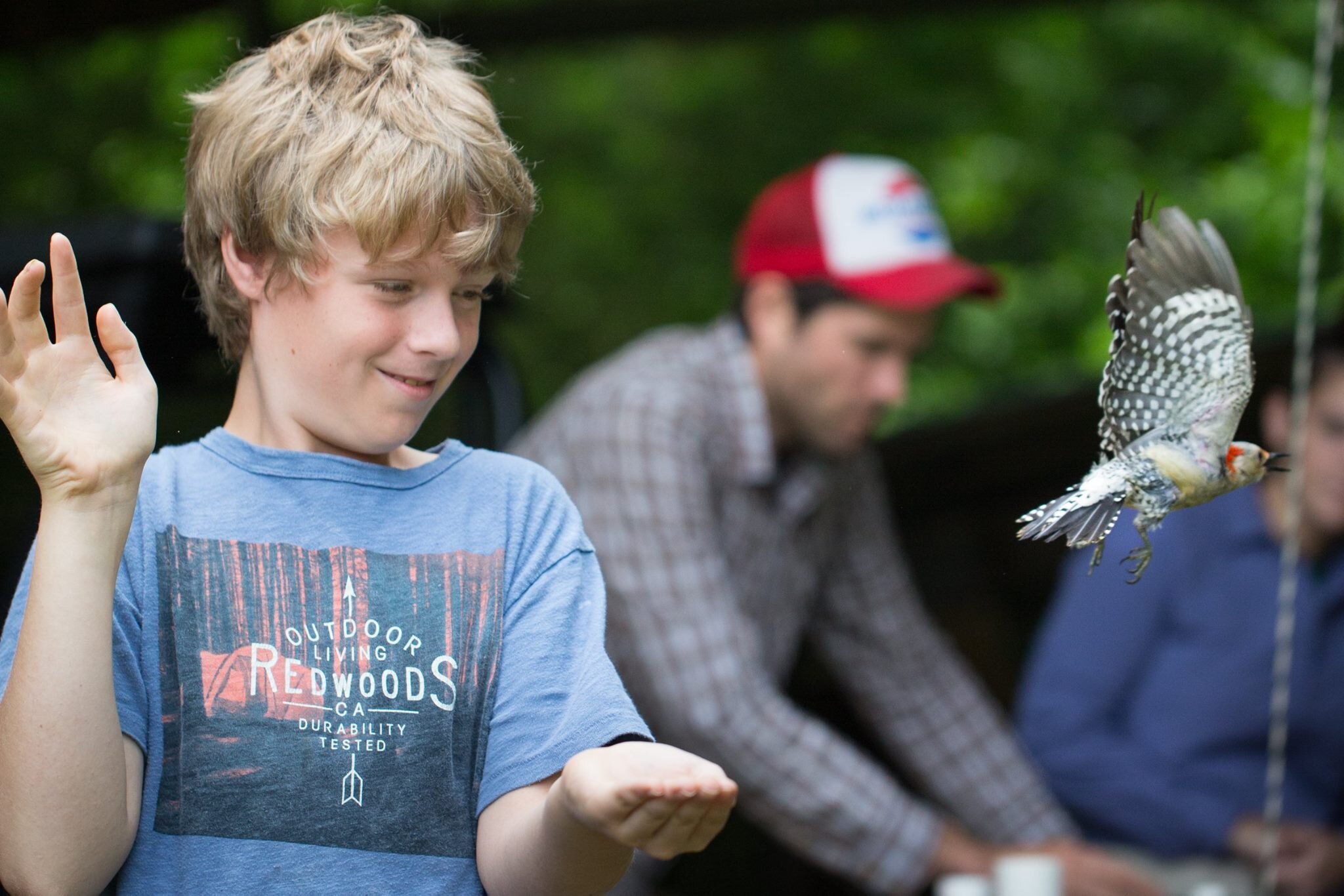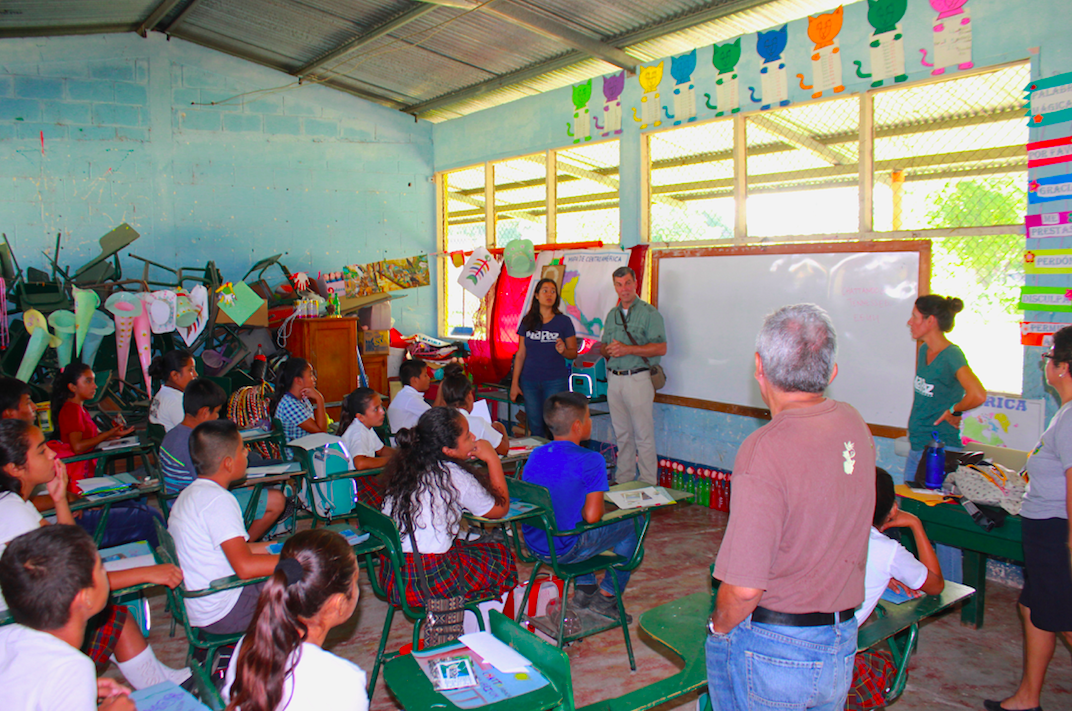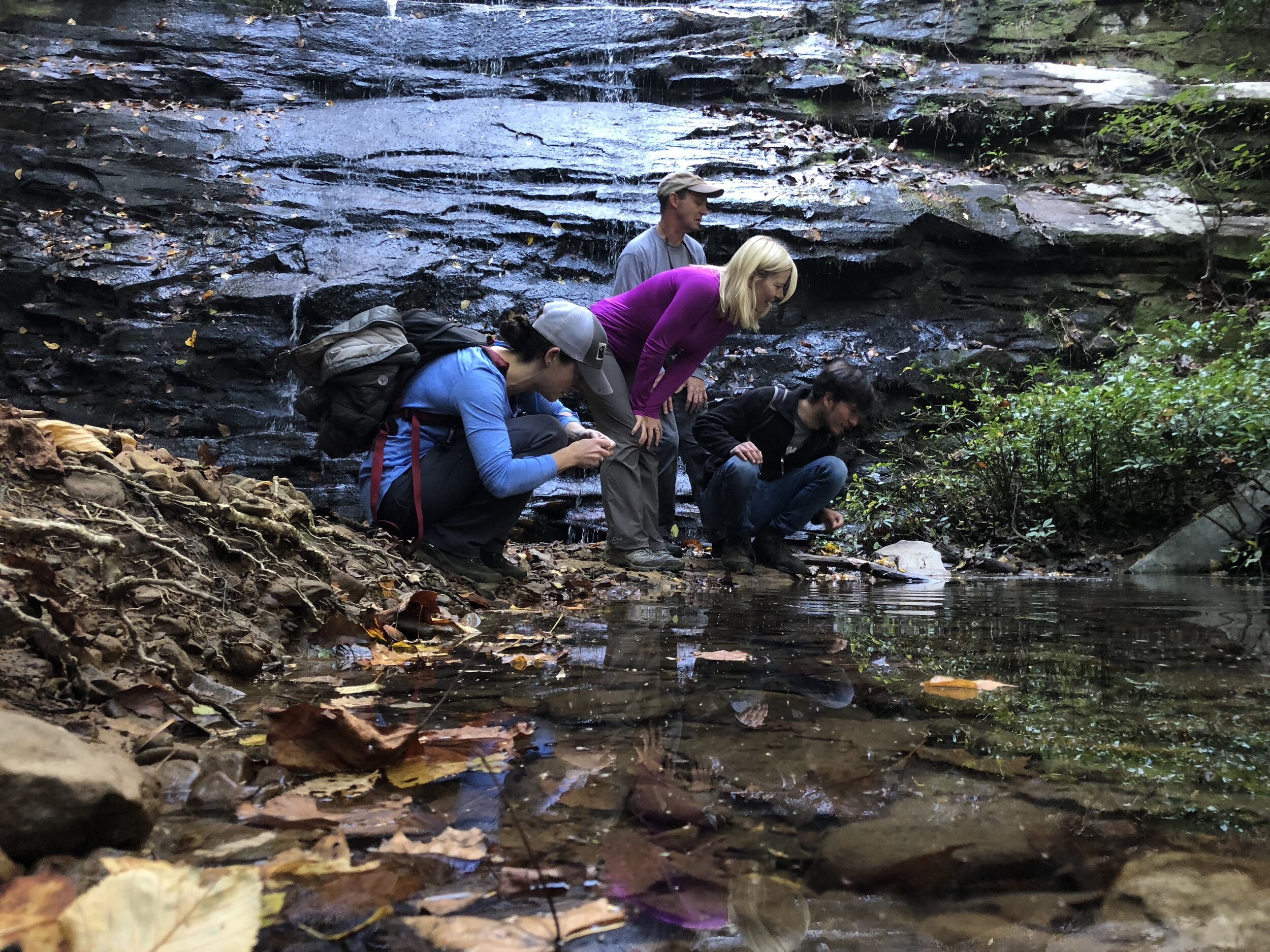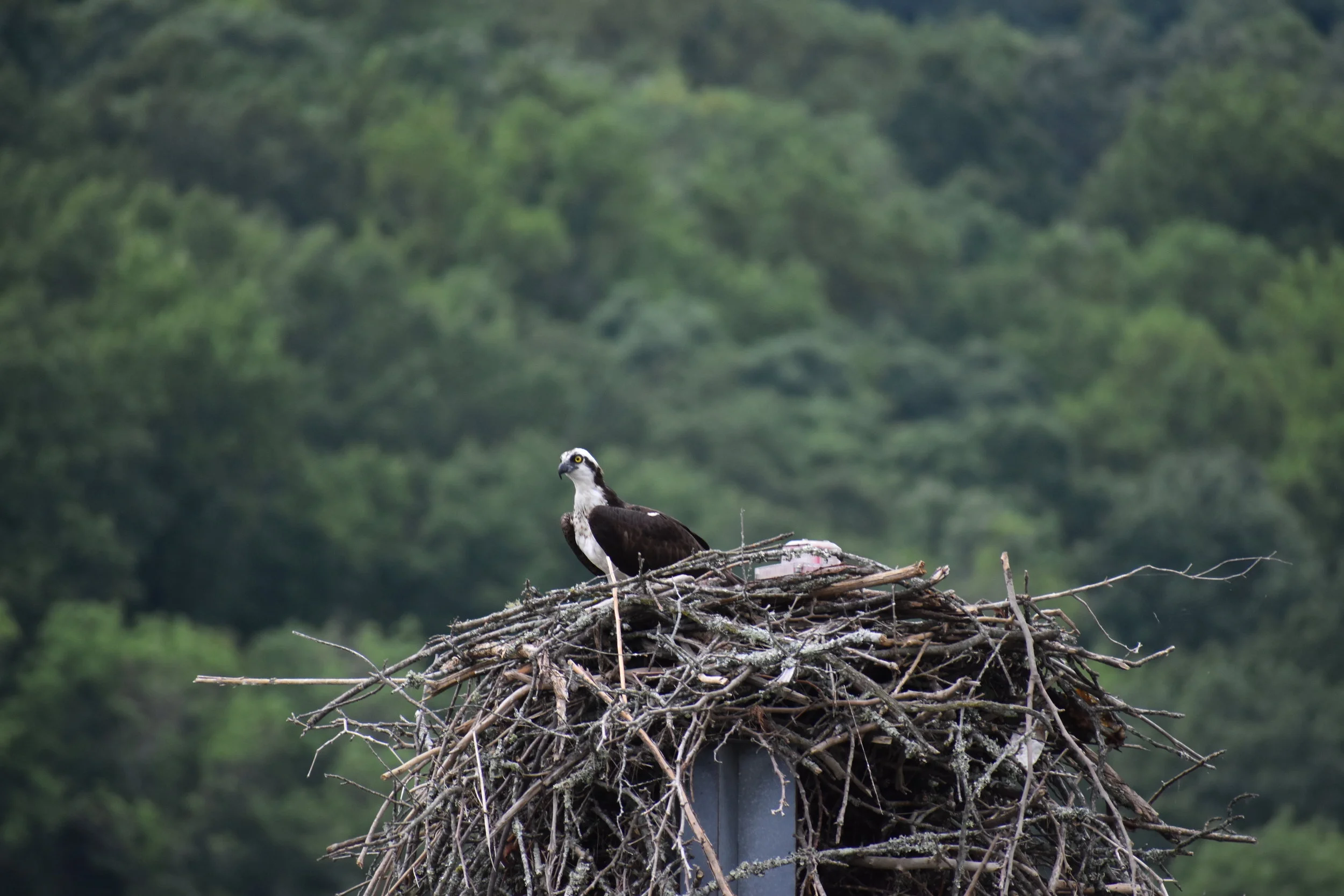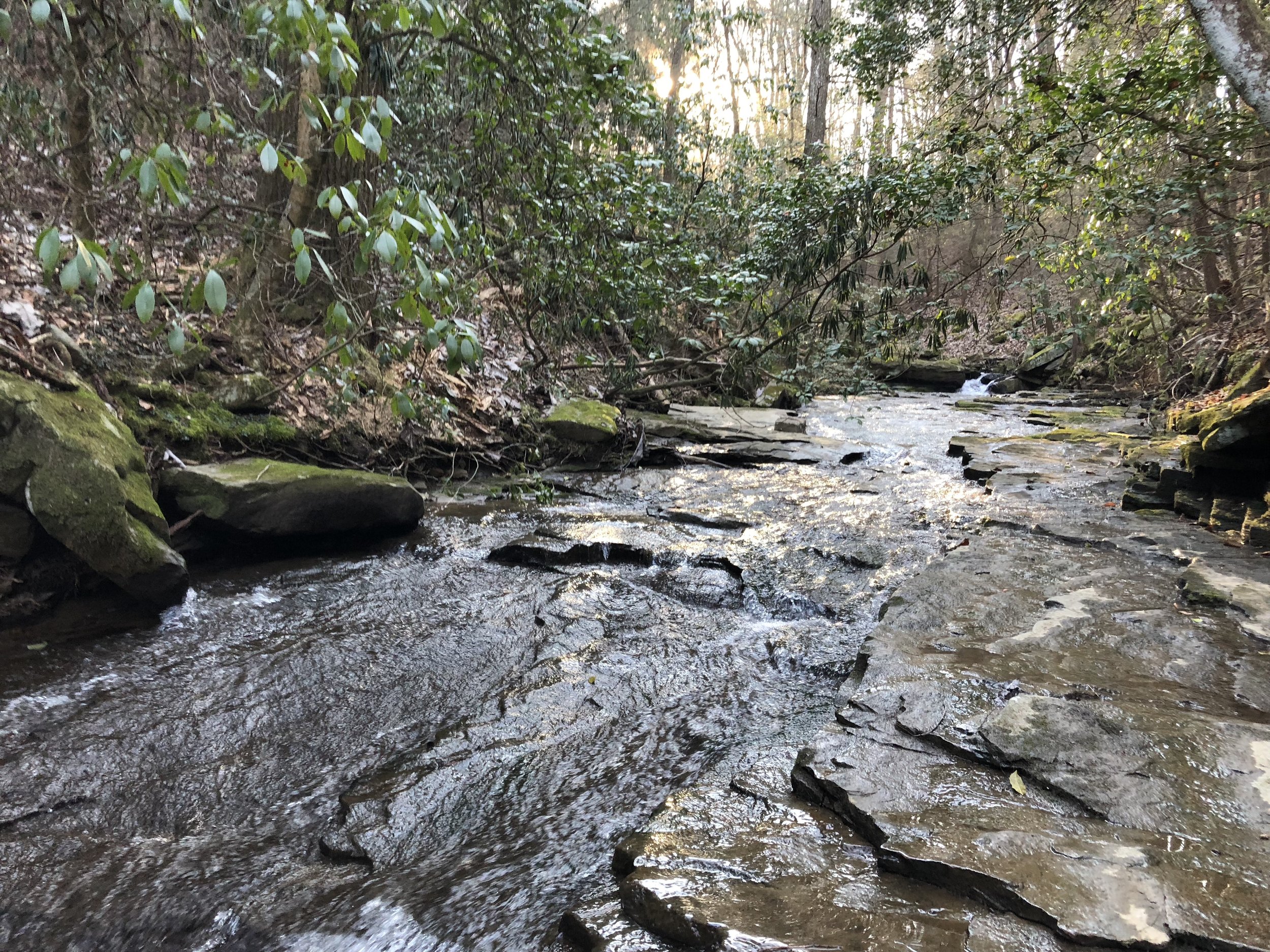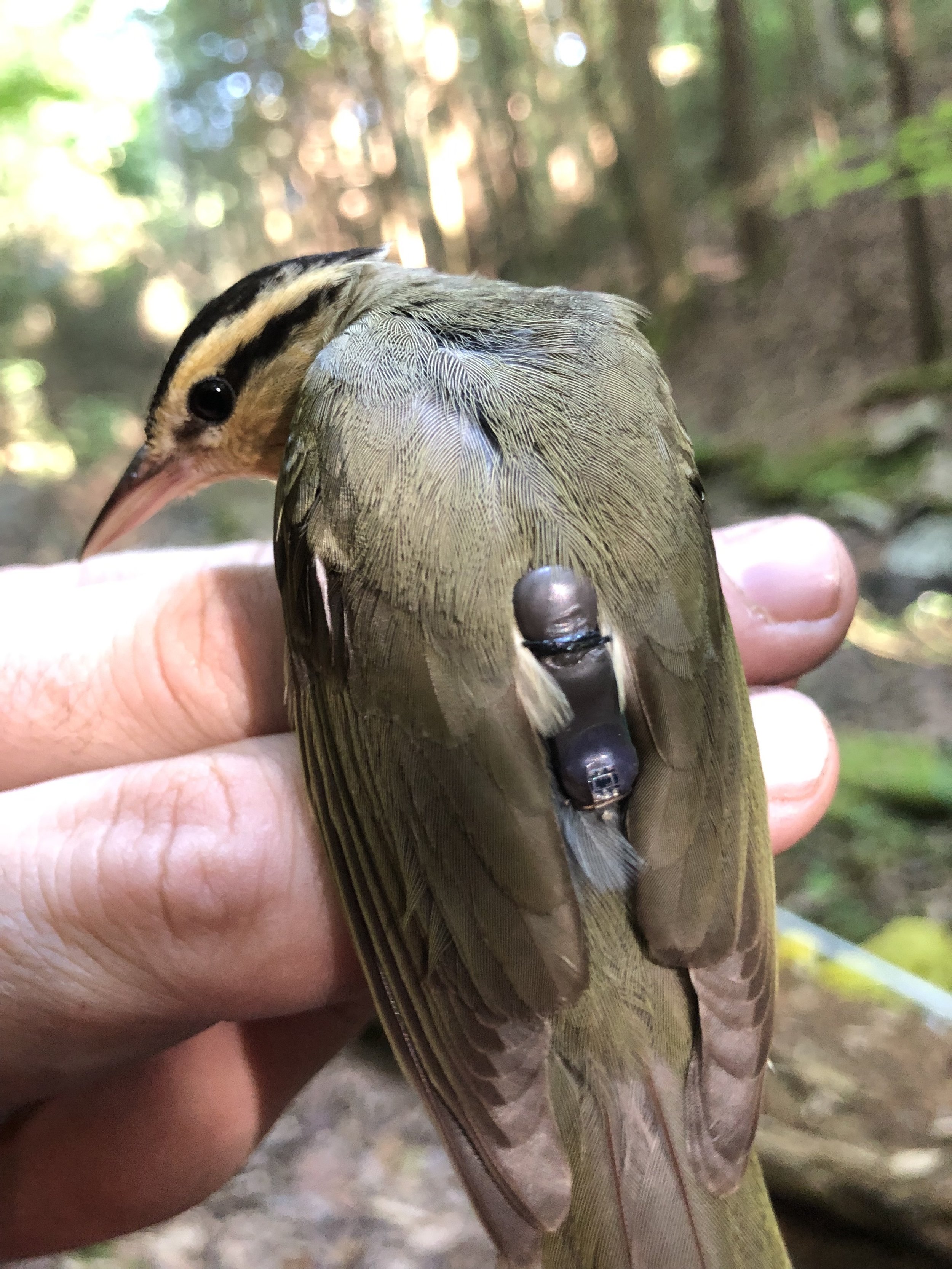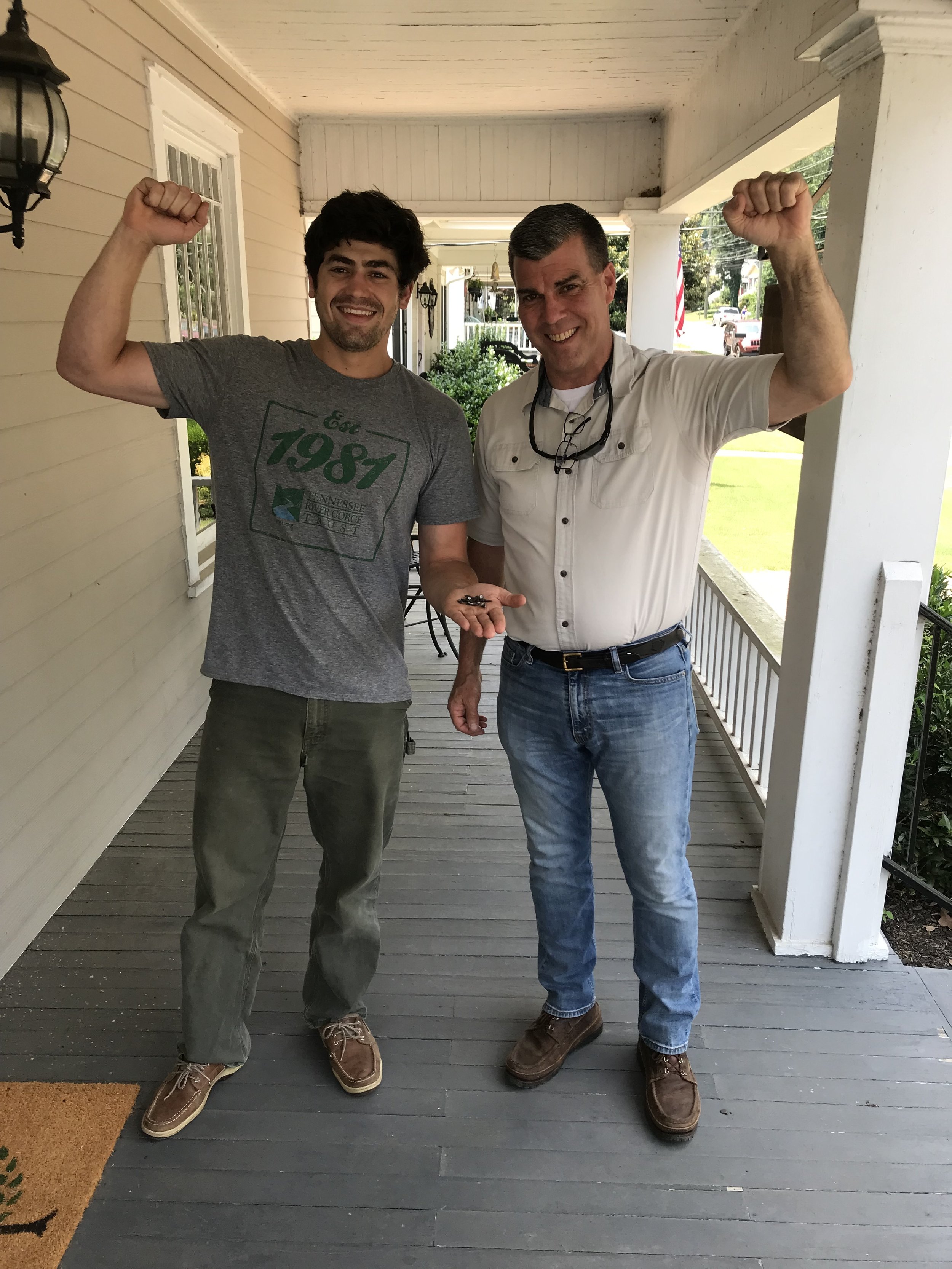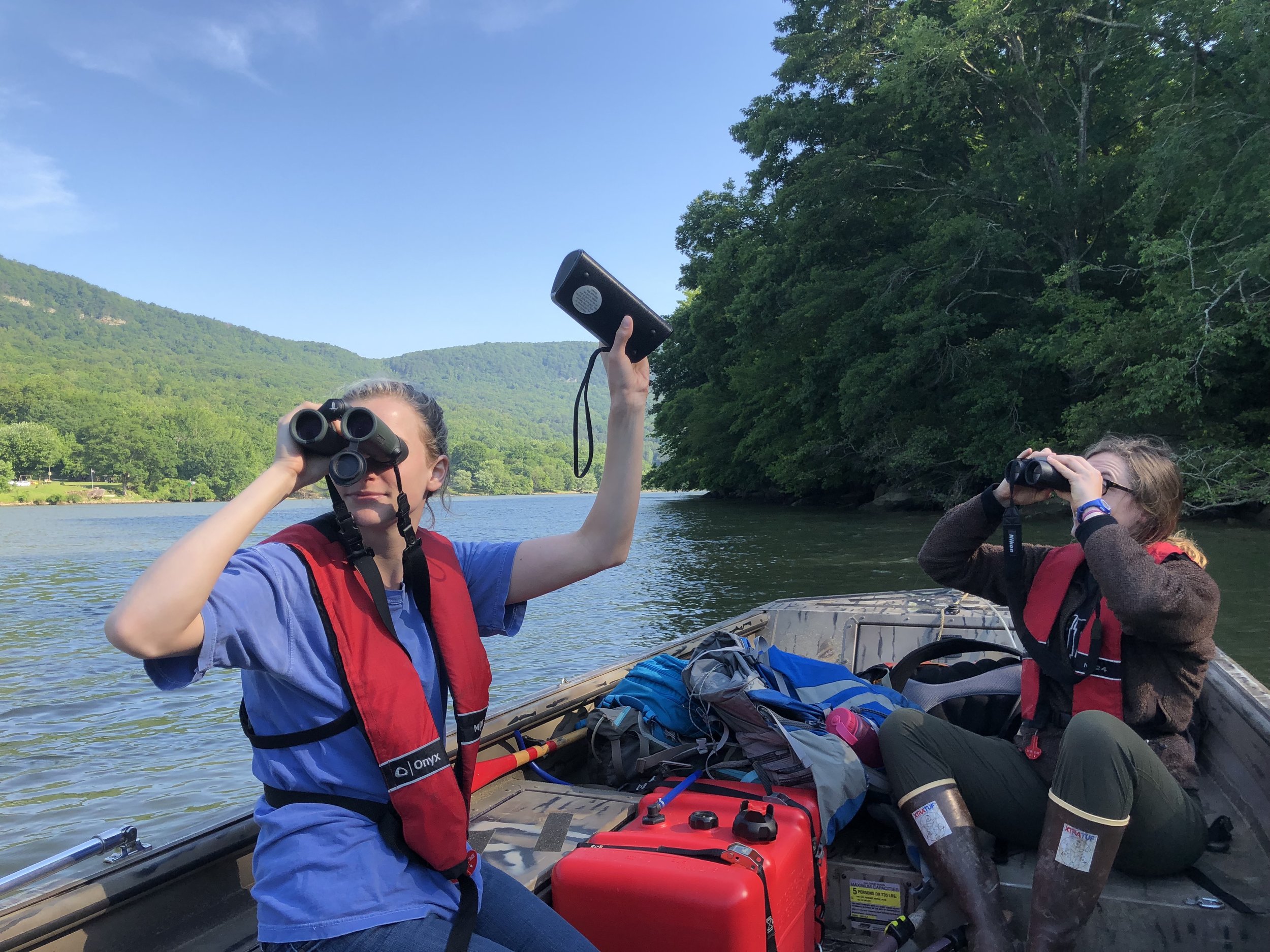Curious about the Brood X cicada hatch? Check out this article to learn more.
Learn more about the mysteries surrounding the Belted Kingfisher
Learn about the fascinating ways wildlife in the gorge pair with their mates.
Learn how wildlife corridors can help animals travel through habitats in our increasingly urban environment.
Beetlemania in the Gorge
If you’ve ever been lucky enough to go on a road trip with our Executive Director, Rick Huffines, you’ll likely hear him lamenting the cleanliness of your car windshield at every gas stop. Last year, when a few of us TRGT staff traveled to a conference in Maryland, it was the first time I had heard of the windshield phenomenon. Many scientists are now noticing that there are far fewer insects smashing against their windshields on long car rides then there were 10-20 years ago. There is not a data-driven explanation for this phenomenon yet, but many insect scientists (aka entomologists) have a guess. Recent studies have revealed global declines in insect biodiversity and abundance. Much of this decline is likely due to habitat loss, use of agricultural pesticides, urbanization, and climate change. Less insects in the world might mean cleaner windshields, but that causes alarm for many conservationists.
Even so, insects might not be at the top of most folks’ lists of favorite organisms. Their creepy crawly nature means that they are often ignored in favor of more charismatic (furry and feathered) species. However, there are some local entomologists that are paying attention to insect biodiversity here in the Southeast. A team of UTC researchers, lead by Dr. Stylianos Chatzimanolis recently reported new state records for 53 beetle species in 13 different families, many found in the Tennessee River Gorge. Their findings are published in the scientific journal Coleopterists. For the study, the Chatzimanolis lab at UTC extensively surveyed lands conserved by TRGT and nearby Lula Lake Land Trust. They used an array of different types of insect traps including pitfall traps to catch the beetles and then identify them. Entomologists bury the plastic cylinder-shaped pitfall traps so that the top of the trap is level with the ground. Beetles and other ground-dwelling insects crawl into the traps, falling into the plastic cylinder. After a few days, they are collected and brought back to the lab for identification.
The news about the new state records for 53 different beetle species on lands conserved by TRGT and our partners at Lula Lake is exciting for a few reasons. First, beetles are an excellent organism to study in order to learn more about global biodiversity. Beetles make up the insect order Coleoptera (latin for “folded wing”) which represents over 40% of all insect species. Insects themselves account for over half of the biodiversity of all living organisms on earth! The species that the UTC team discovered in and around the river gorge could be indicators that TRGT’s conserved lands are providing good habitat for beetle biodiversity. The Cumberland Plateau and Tennessee Valley regions are well-known for their rich aquatic, plant, and bird biodiversity, but insect biodiversity has only been explored by a few entomologists like Dr. Chatzimnolis. The new beetle species records help paint a better picture of the story of insect biodiversity in our region.
Healthy insect biodiversity is important for many organisms on earth, including humans. You might remember that last year the journal Science reported that there has been an almost 3 billion bird loss since the year 1970 (you can read more about this in our blog here). Many of our favorite birds rely solely on insects for their food, and many biologists think there is a connection between bird declines and insect declines. Insects (especially beetles) also have other important roles in ecosystems – they break down dead plant and animal matter into soil nutrients, they pollinate plants that make our food, and help keep the soil healthy.
It's easy to see why the windshield phenomenon bugs conservationists like Rick so much. Without beetles, mayflies, ants, honeybees, we’d have much bigger problems than an extra trip to the car wash. Next time you see a squished beetle on your windshield, rejoice! (or at least appreciate it before grabbing the sponge). Want to learn more about beetles and other insects? A great way to start is by identifying organisms you see in your backyard. Check out the Seek app by iNaturalist. You can also nerd out by digging through UTC’s virtual insect collection.
By Angie Langevin
Photos by the University of Tennessee Chattanooga
Get ready to ride, hike, and run!
Learn more about why TRGT marks property boundary lines
Learn some of the ways to explore the Tennessee River Gorge
Breeding pair of Peregrine Falcons at Castle Rock!
Big news in the Tennessee River Gorge! Through a series of priority land acquisitions, conservation lands now span over 7 continuous miles along the south side of the Tennessee River.
Vanishing Bird Populations
What is TRGT doing to help?
You may have recently read the news about a study announcing an alarming decline in North American bird populations. The study, from the renowned journal Science, estimated that bird populations within the two countries have declined by 2.9 billion birds or 29 percent since 1970 (read this NY Times article to learn more)! It is no secret that birds, among many other types of wildlife, have been in trouble for a number of years. The leading cause of this population decline is habitat loss. Habitat loss includes the destruction or alteration of habitat to the point where it no longer meets the basic life needs of a species. A bird species’ specific habitat needs vary depending on the species. For instance, some bird species may need mature forests, while others may require grasslands or early successional forests (young forests). Once habitat is converted from functional ecosystems to incompatible land uses, the overall amount of suitable places for these species to live will be reduced, in turn reducing population numbers. Other reasons for the declines include pollution, adverse effects from invasive species, and other complex factors.
These sobering bird population declines have been brought to the spotlight by this high-impact study in the journal Science, which we hope will initiate conservation action. Mitigating this downward trend in North American bird populations is no easy task and many groups have been working to curb this decline for decades. These collective efforts include land protection, habitat restoration or creation, research, and education.
What has TRGT been doing to conserve bird populations?
TRGT has been working on multiple fronts to mitigate these worrisome population declines. Here are some of the many ways we are doing our part to help:
1) Land Protection-
Photo by Kevin Livingood
Habitat loss is the leading cause of these population declines, so protecting habitat in perpetuity is a direct way to help conserve bird populations. Since 1981, TRGT has been protecting land in the Tennessee River Gorge. Over 6,000 acres of wilderness have been protected by TRGT through fee simple ownership, and TRGT partners with the State of Tennessee and the Tennessee Valley Authority to oversee 17,000 acres. These lands include a variety of habitats that are critical for migrating and residential bird populations. Additionally, we work as stewards of these lands to ensure they are healthy and functional ecosystems. To learn more about TRGT’s land conservation, visit this link.
2) Research-
TRGT conducts innovative bird research to better understand the complex dynamics of the species that depend on the Tennessee River Gorge. Over the past four years, TRGT has been tracking the migration of two songbird species, the Louisiana Waterthrush and Worm-eating Warbler. This research will help us learn more about their enigmatic migratory behaviors and wintering grounds. Information like this is essential for effective long-term conservation efforts. To learn more about this migration research, check out this link. TRGT also operates a bird banding station to monitor and take inventory on the bird species in the Tennessee River Gorge. Learn more about the TRGT Bird Observatory at this link.
3) Education-
Education is an essential component of conservation. A more environmentally aware community is better suited to step up and take conservation action. Knowledge of bird population declines and broader environmental topics need to permeate beyond the scientific and conservation world and into the general public. We all depend on a healthy and functional ecosystem for our everyday life. By learning more about our environment, we are far more likely to make environmentally conscious decisions and support conservation initiatives. TRGT leads a variety of educational and community engagement efforts with all ages. Whether it be classroom presentations, community lectures, professional bird banding workshops, or field trips to the Bird Observatory, TRGT offers a wide variety of environmental education activities. To bridge the gap between the international communities that serve as the winter homes of many migratory birds from the eastern United States, TRGT has initiated a cultural exchange between the Chattanooga community and the Petén Region of Guatemala. Through this partnership, TRGT and our Guatemalan partners have directly engaged over 600 people regarding our shared responsibility to protect migratory bird species. You can find more about the Guatemalan partnership at this link.
TRGT could not do any of this important work without the help of our incredible community. If you would like to support TRGT’s conservation efforts, please consider donating. Thank you!
The Tennessee River Gorge offers incredible bird watching!
It all started with TRGT avian researchers attaching geolocators to a particular migratory bird species, the Louisiana Waterthrush. After wearing the tracking devices for a full year, five of these birds returned to the Tennessee River Gorge equipped with units full of fascinating data. The geolocators revealed the migratory pathways and wintering destinations of the five birds; two of which spent their winter in Northern Guatemala. Part of the Lynhurst Foundation grant funding this project included a cultural exchange component in partnership with La Paz Chattanooga. The plan was to connect with communities on the other end of the migration to engage in a cultural exchange centered around neotropical bird migration. In the fall of 2018, TRGT and La Paz Chattanooga traveled to the Petén region of Guatemala to meet with partners and commence the cultural exchange program. For information about our initial visit to Guatemala, check out this link.
In the spring of 2019, TRGT brought our Guatemala partners to Tennessee to continue this cultural and scientific exchange. Representatives of the Petén Birders Association and the Wildlife Conservation Society flew over the Gulf of Mexico, just as the Louisiana Waterthrush had done earlier that month, and began an exciting two week adventure. The group traveled to Chattanooga area schools, community lectures, and meetings in which we personally engaged over 430 people. The representatives from each community shared artwork and letters between students from Guatemala and Tennessee followed by moving messages about how these migratory birds connect us. Our partners taught science classes about conservation in Guatemala, Spanish classes about Guatemalan culture, and community members about our shared responsibility to protect the environment. Each day before we met with classes and community groups, our Guatemalan partners accompanied the TRGT bird research team into the field to capture Louisiana Waterthrushes that had just traveled from Central America themselves.
Our Guatemalan partners are doing incredible work in Petén, Guatemala. Both the Petén Birders Association and Caoba Birders Club (a partner organization in Petén) work day in and day out to educate their surrounding communities about bird conservation and more broadly, the long-term benefits of protecting their environment. The group is also leading by example through demonstrating how eco-tourism and birding can provide economic incentives to leave their forests and farms intact, rather than selling the lands for incompatible land uses such as monoculture oil palm plantations. Our other partner, the Wildlife Conservation Society office in Flores, Guatemala, works to use compelling science to inform the protection of Guatemala’s unique wildlife. These organizations work to protect many of the same migratory species that we protect here in Tennessee, and in some cases, even the same individual birds!
This program taught us and the broader community how connected we all are and emphasized our shared responsibility to protect the species that call both places home. This exchange is still growing. We have partnered with Velo Coffee Roasters on a microlot coffee sourced from Guatemala. The proceeds from this coffee will support the Petén Birders Association in their mission to promote bird conservation and environmental education in the Petén region of Guatemala. For more information about this product, click here.
Stay tuned for more exciting news. This is just the beginning!
Photo Gallery
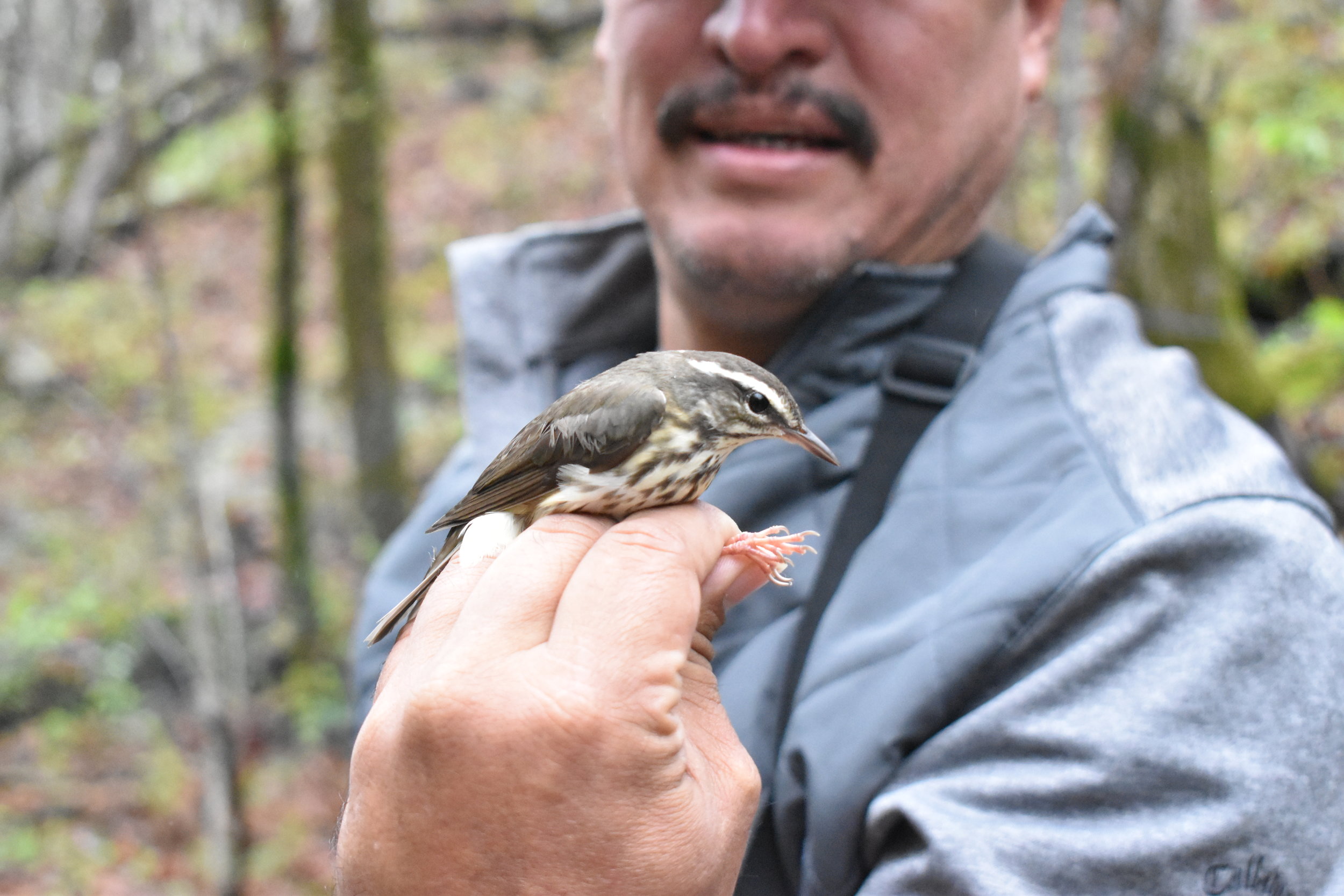
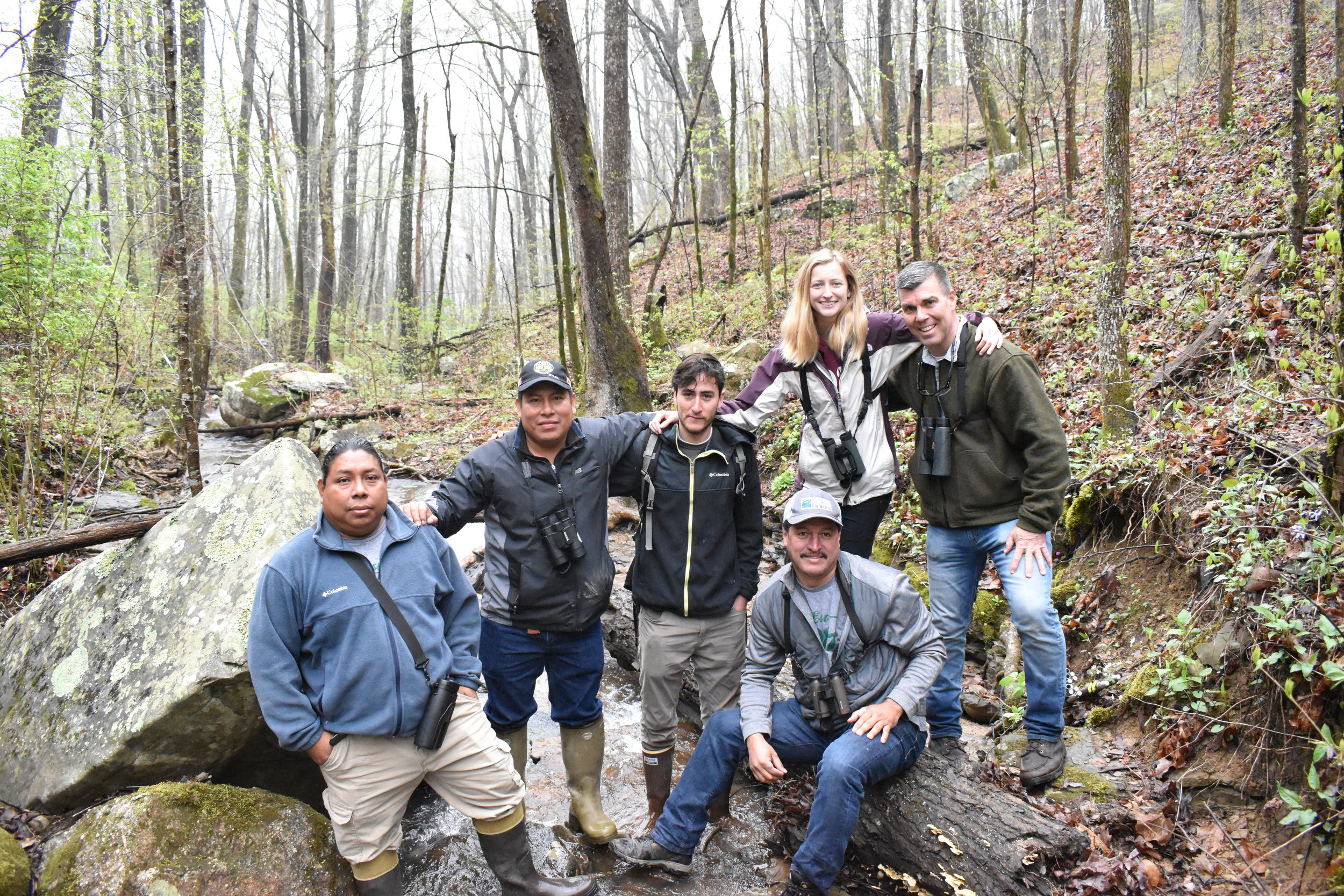
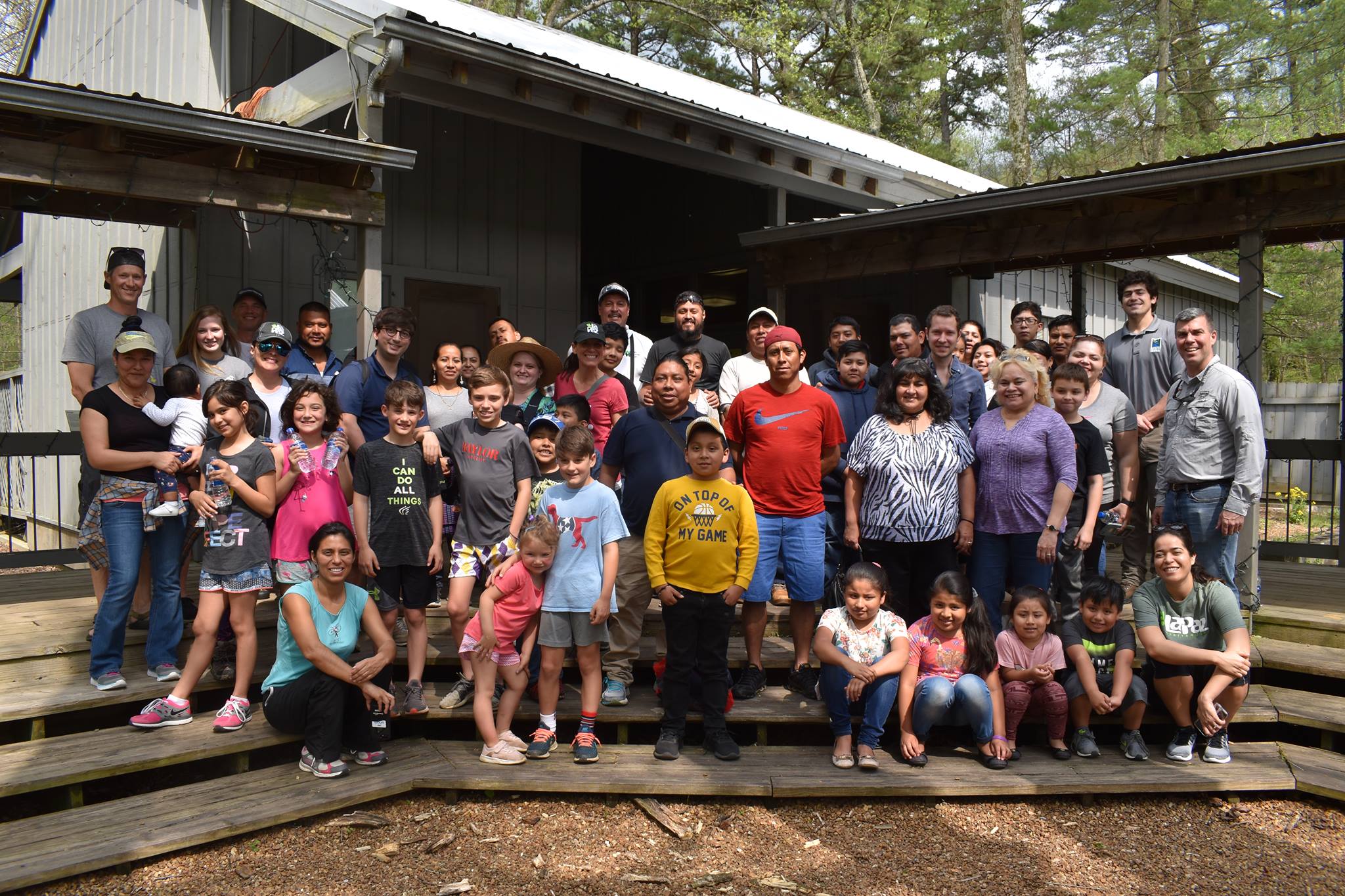
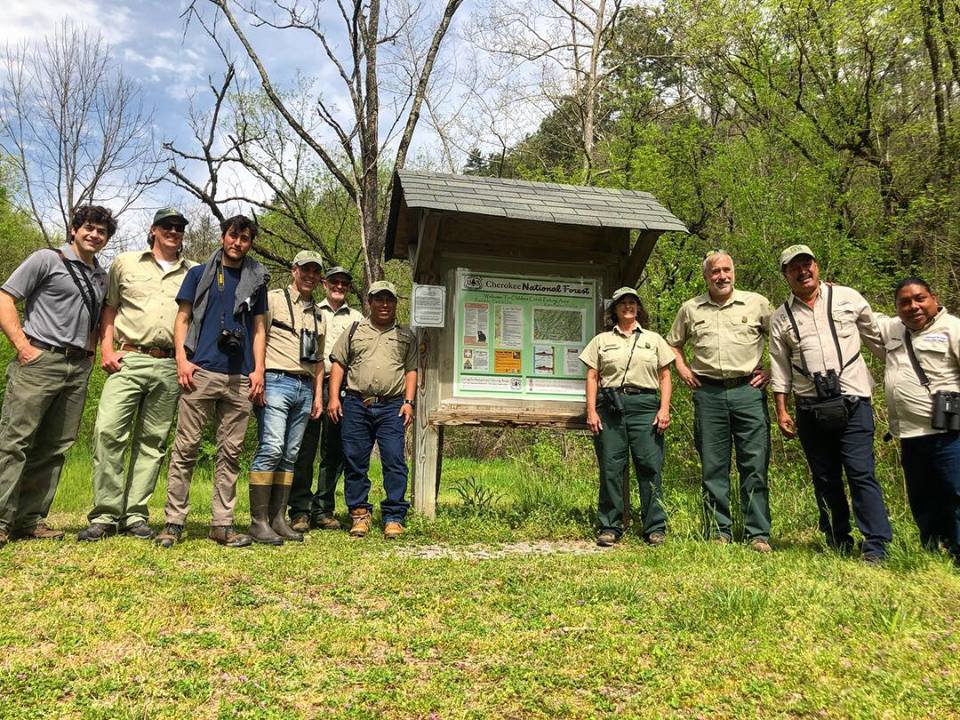
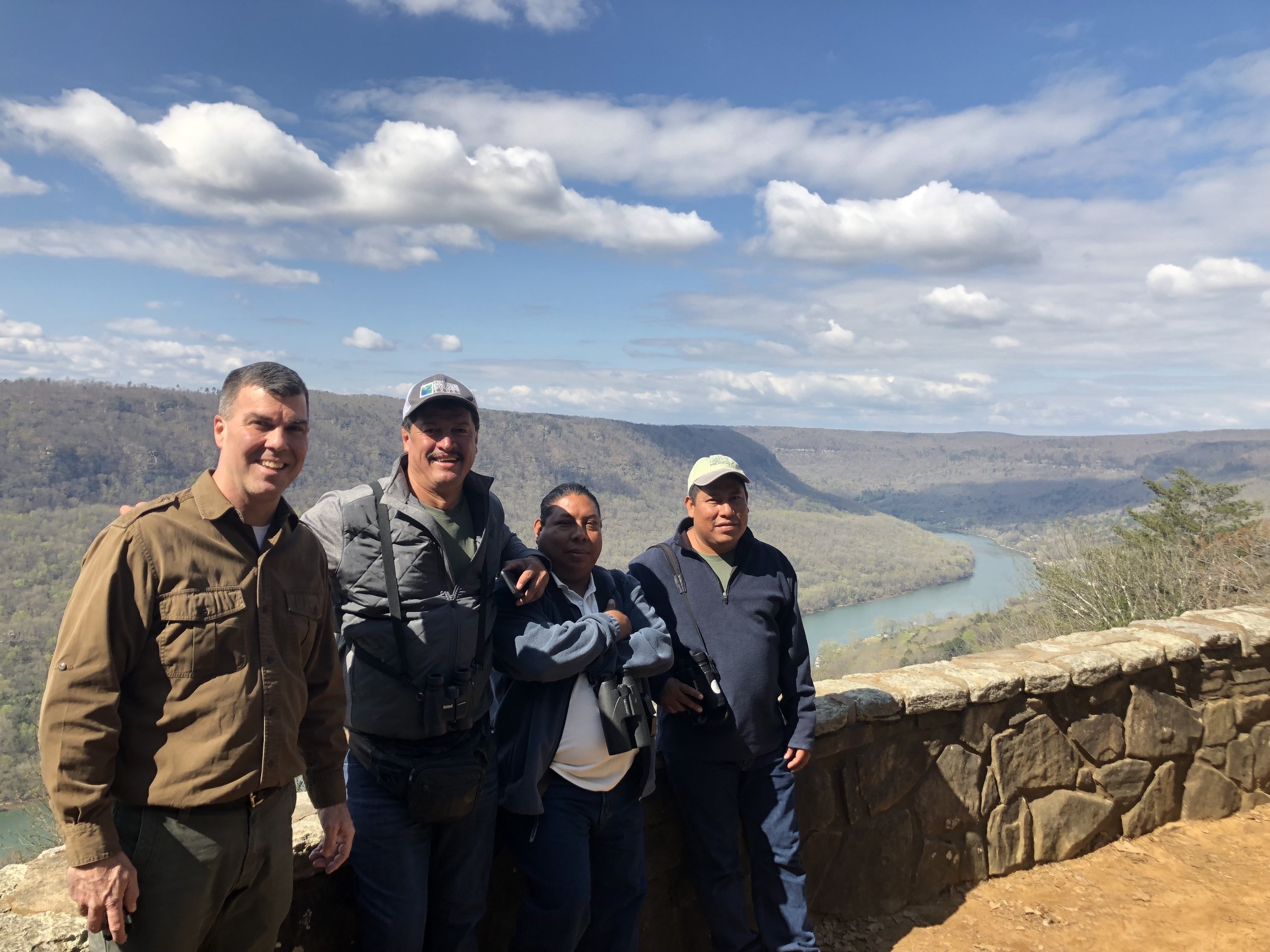

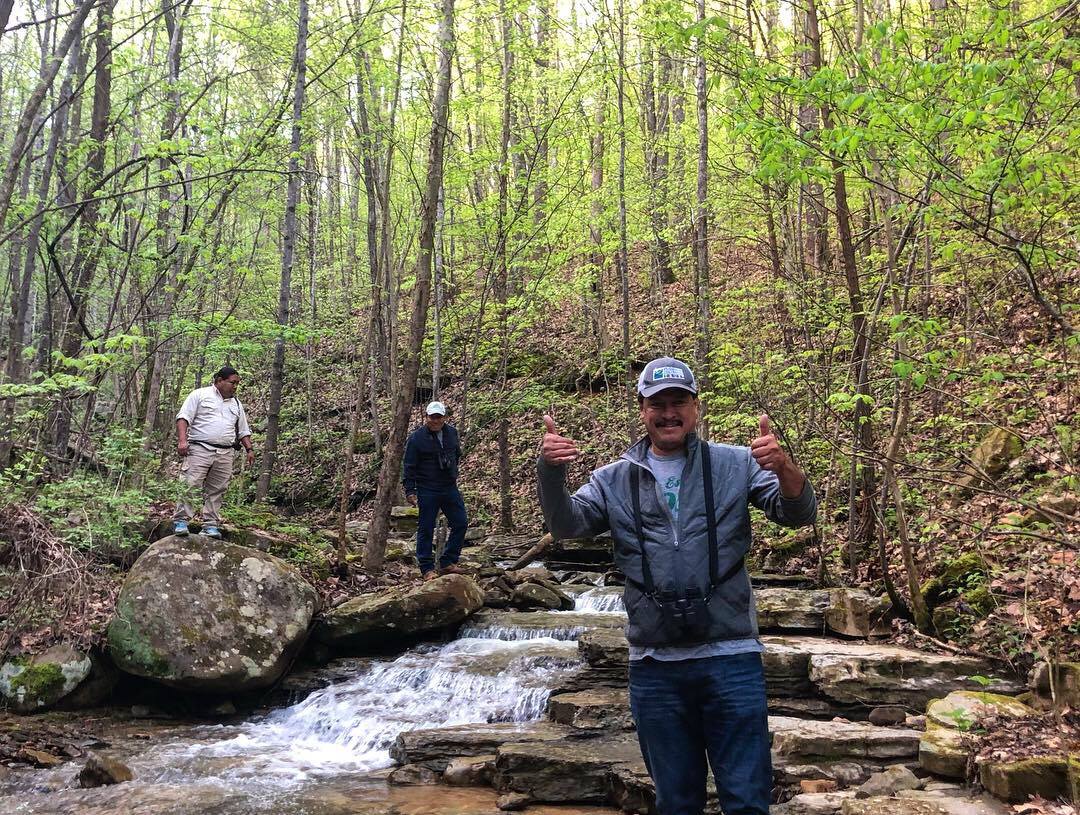
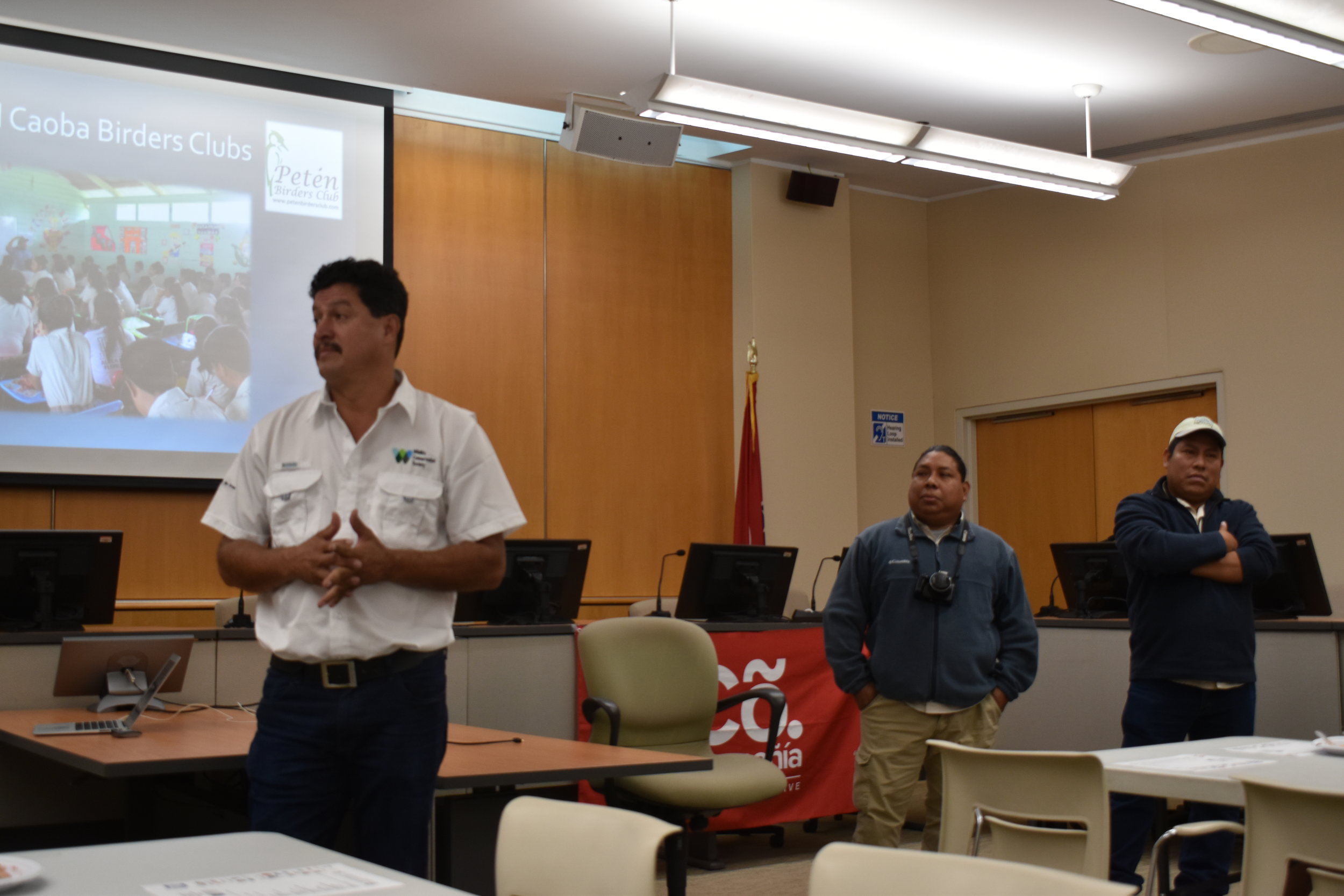
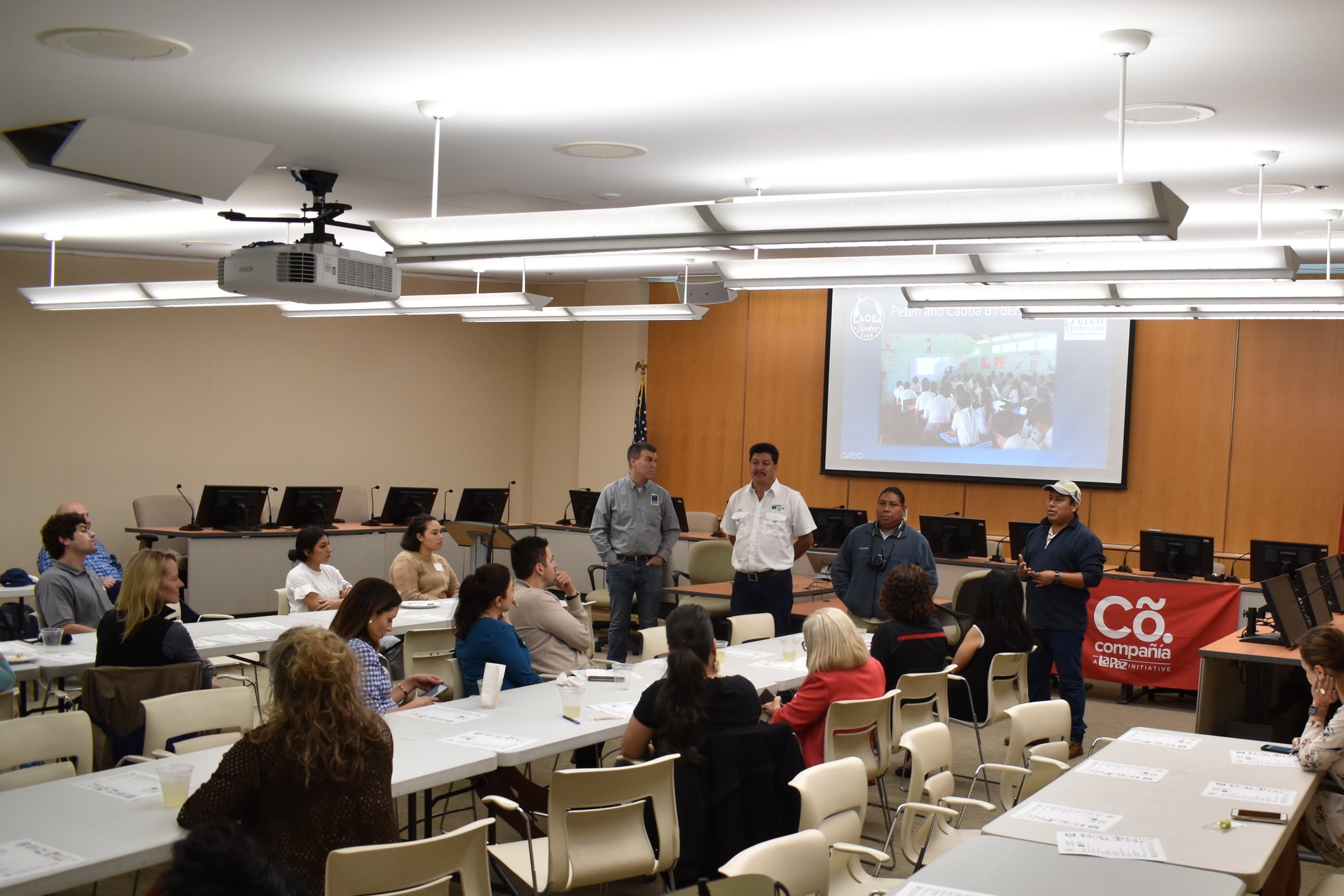

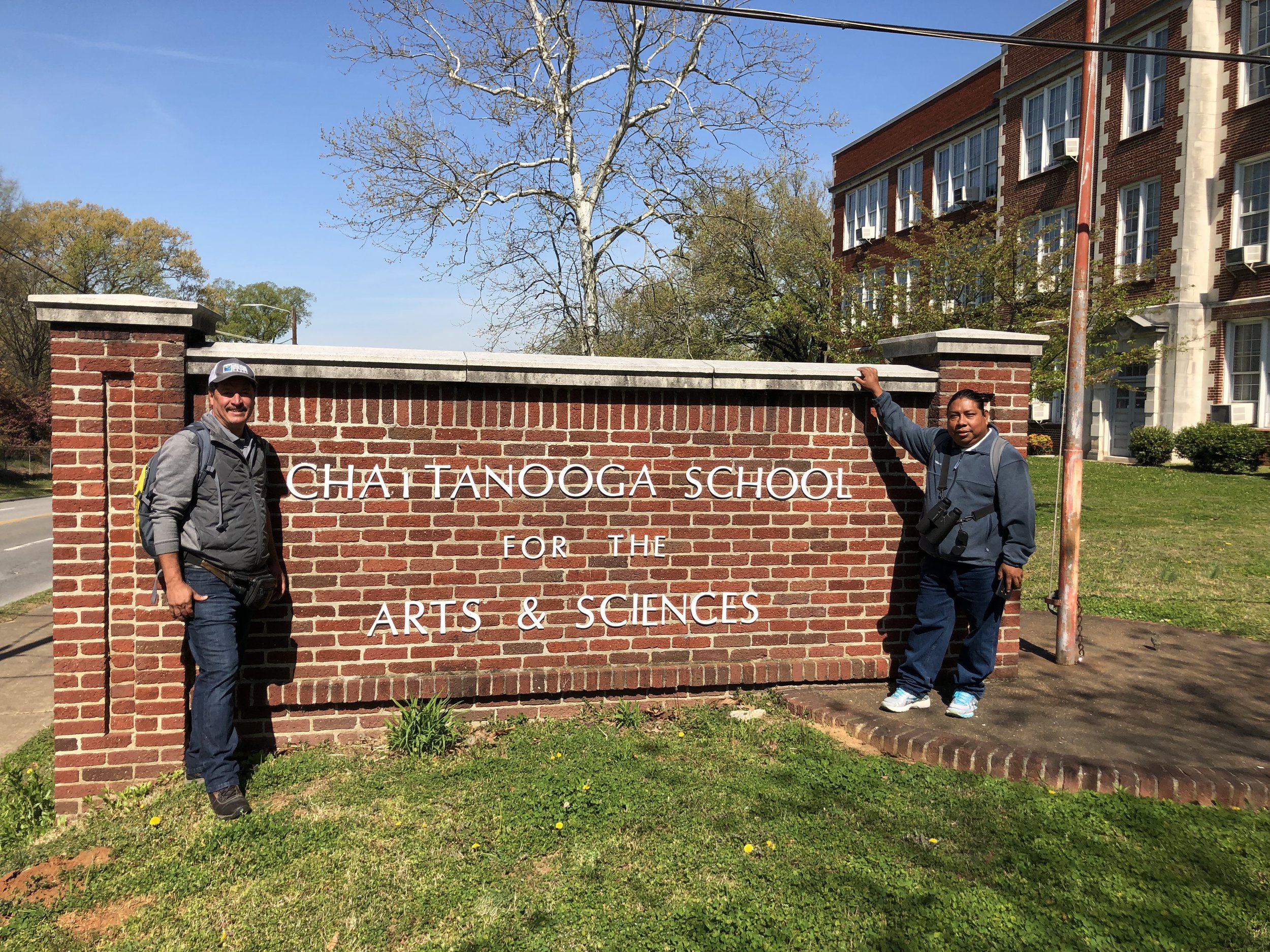

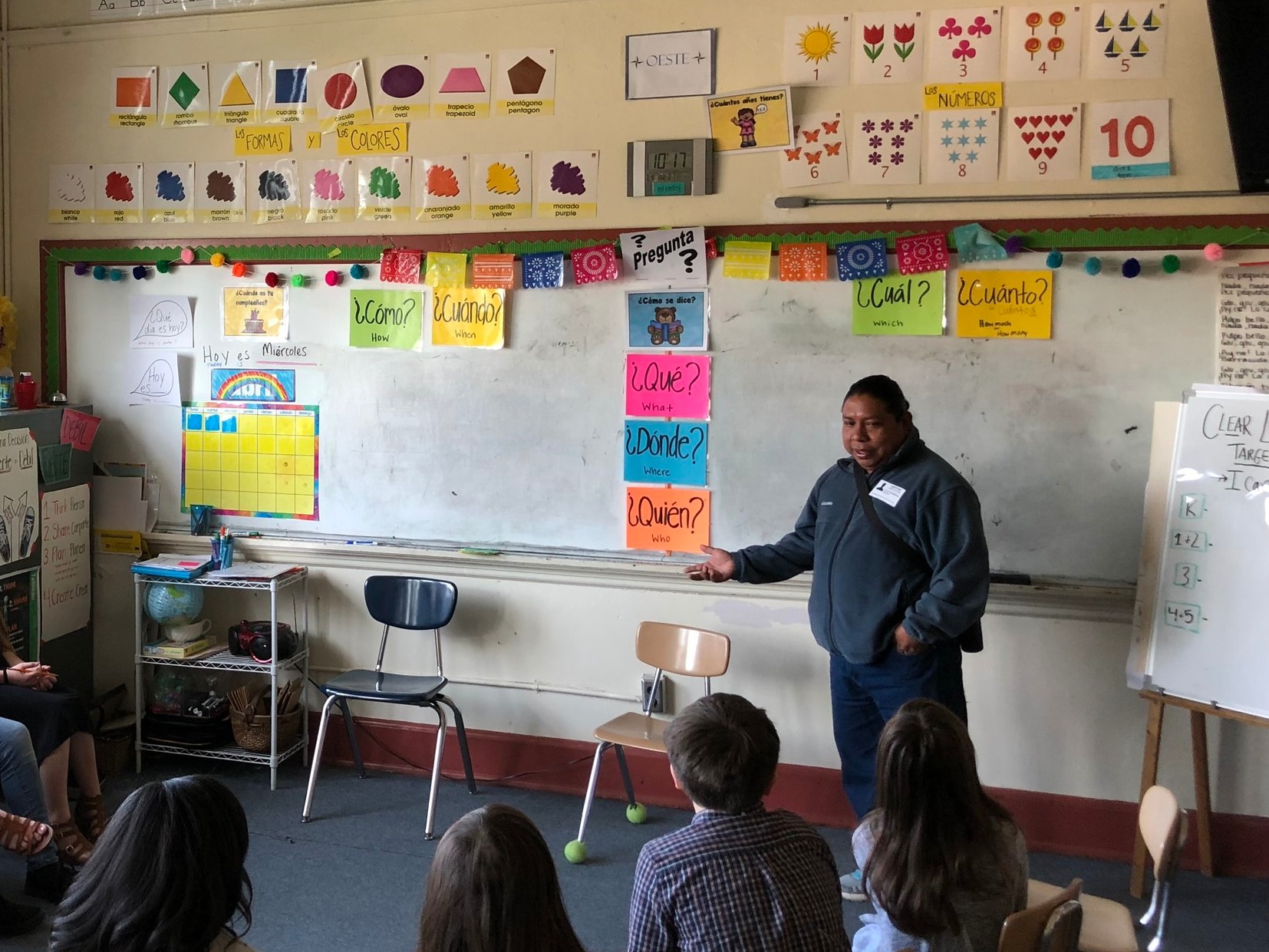
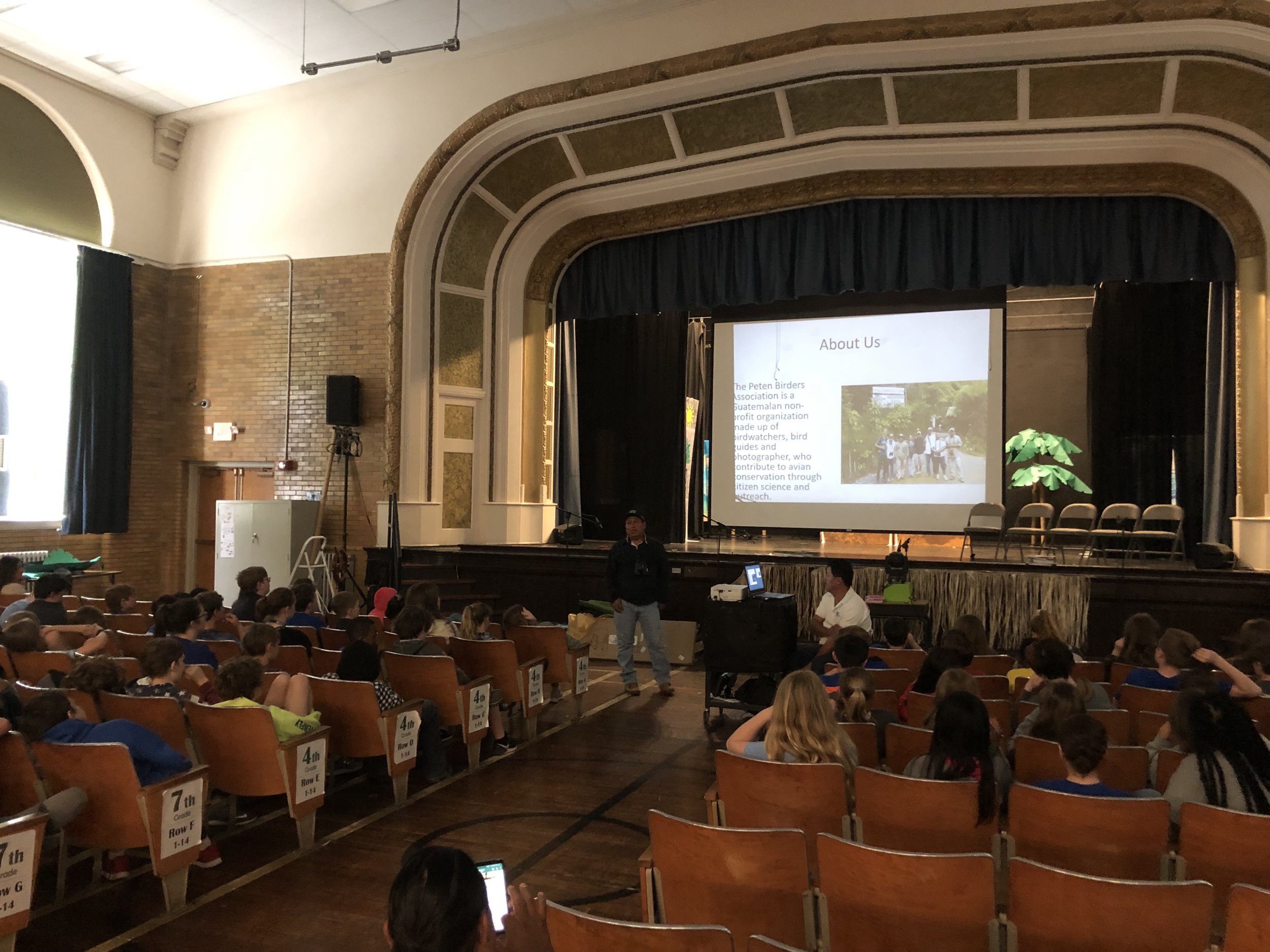
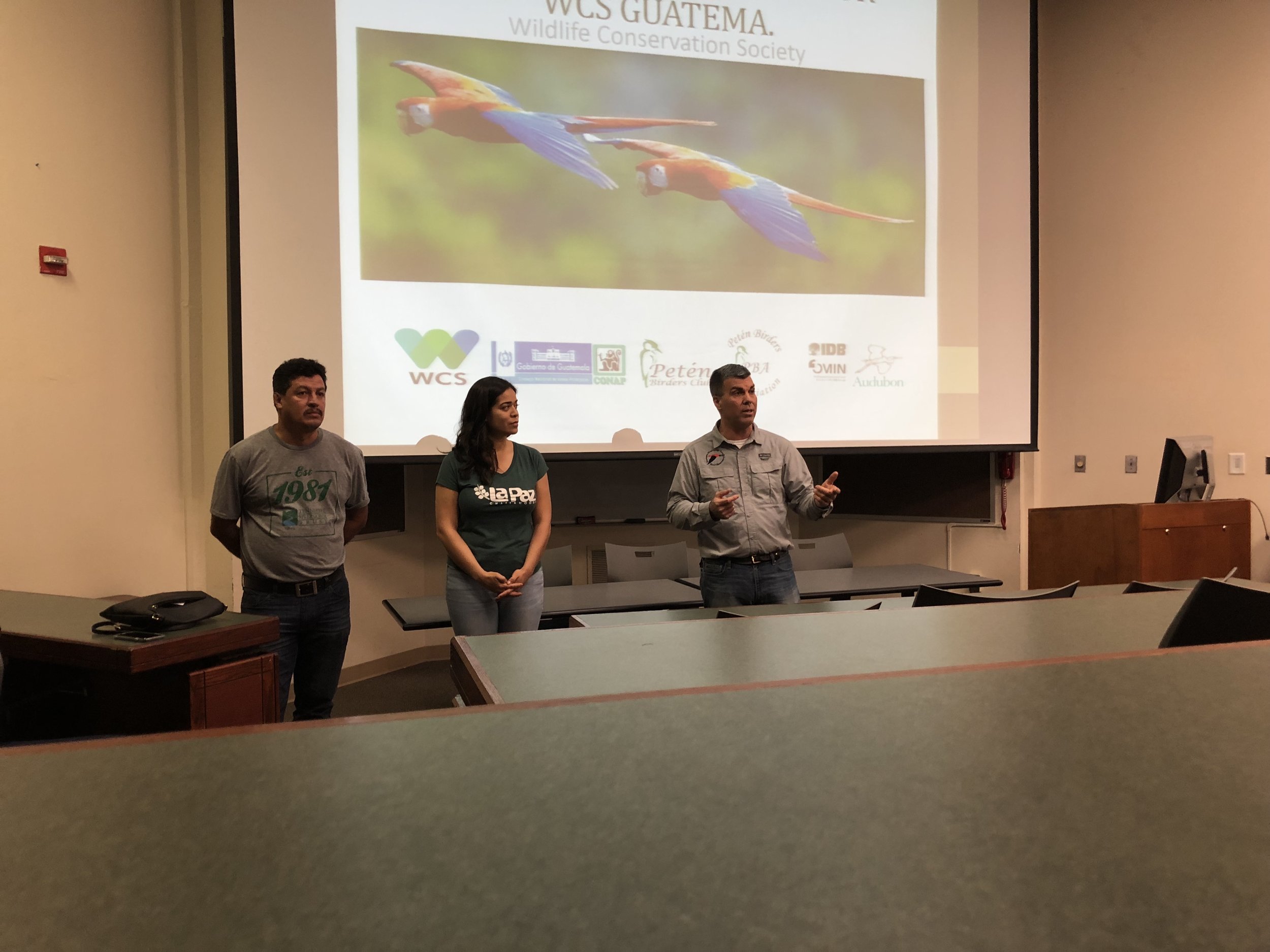

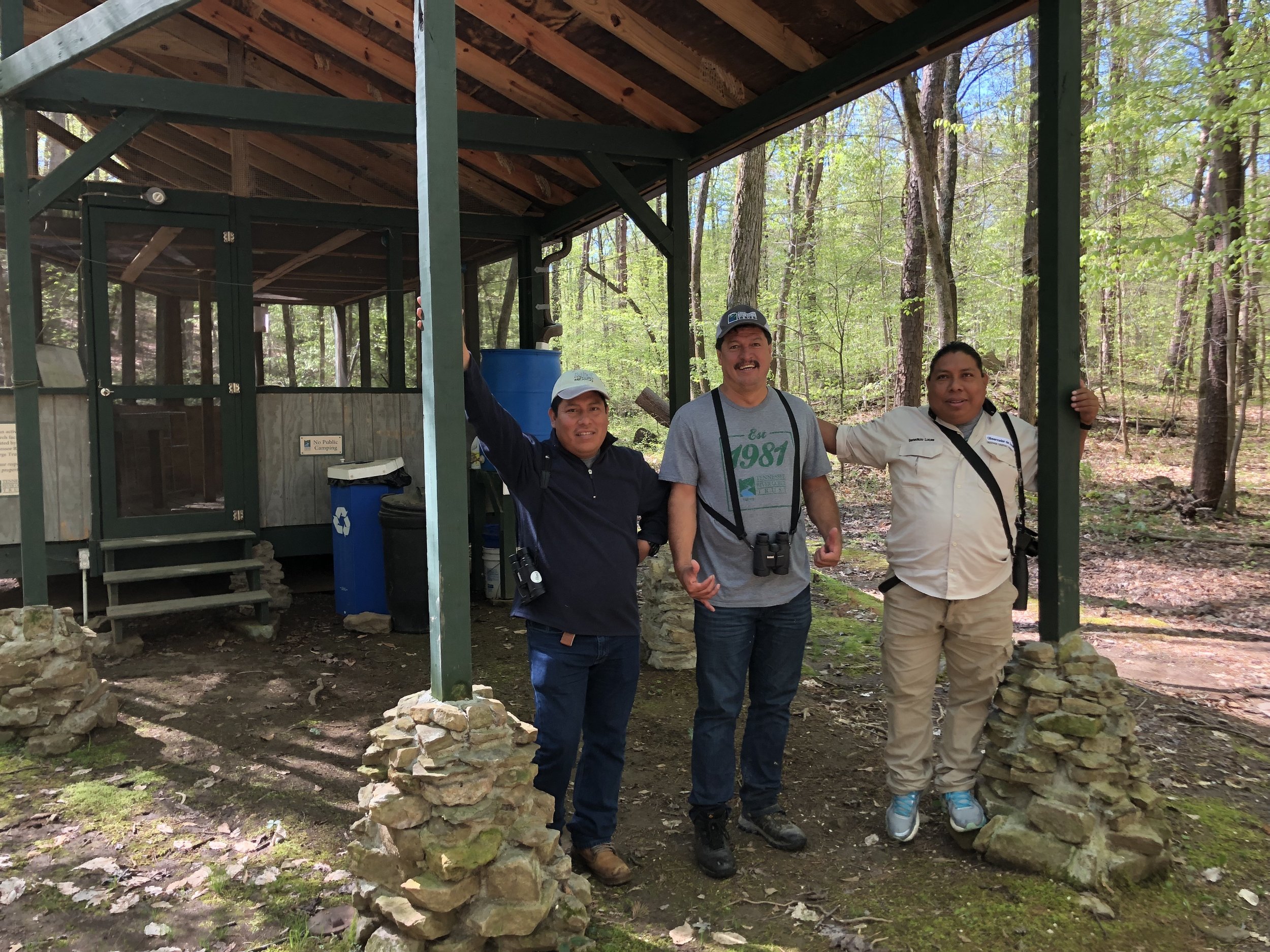
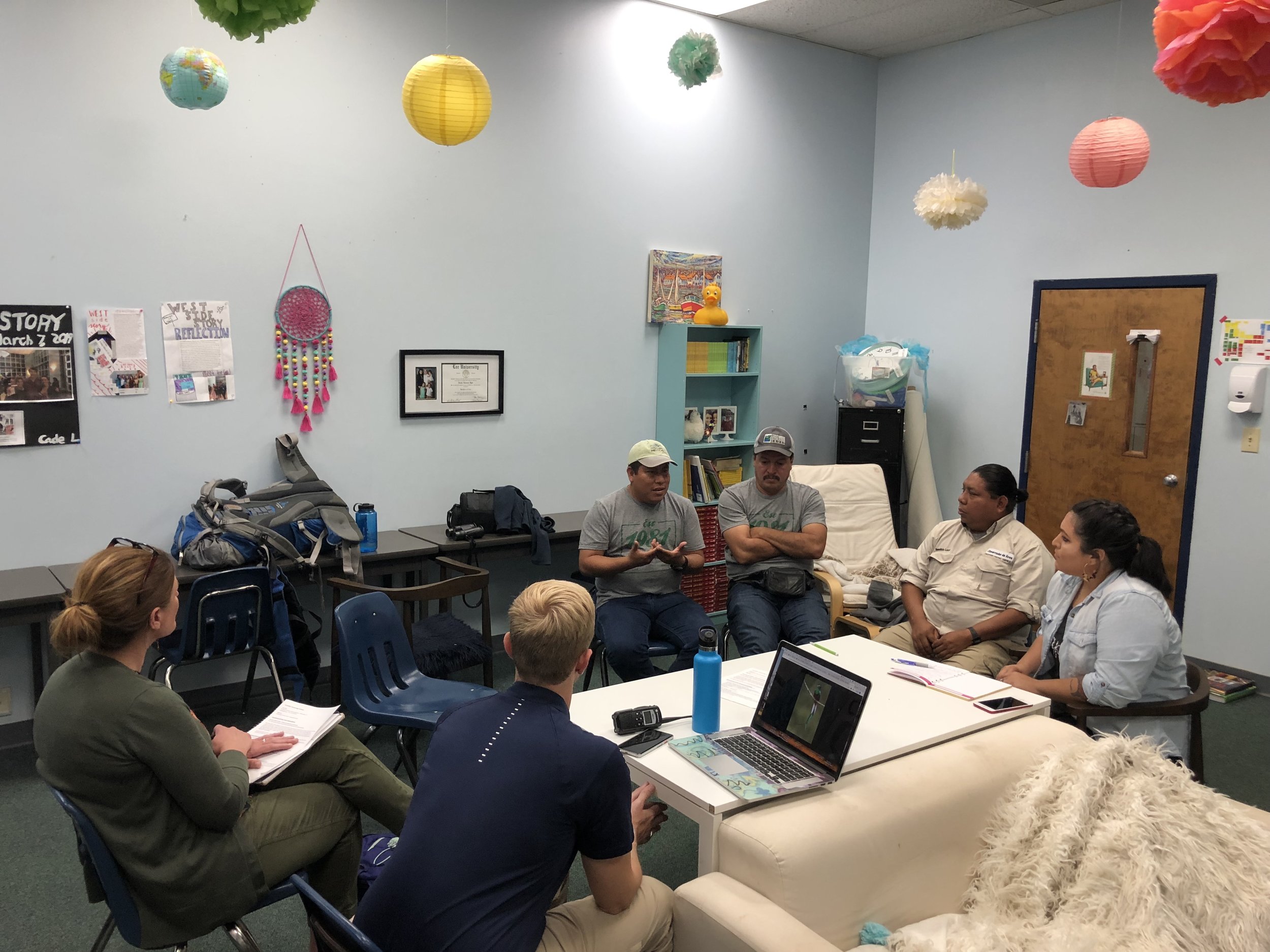
This project was funded by the Lyndhurst Foundation
Simple steps to improve water quality in your own backyard.
39 Geolocators Back in Our Hands!
From left to right: A Worm-eating Warbler wearing a geolocator, the 12 geolocators retrieved by TRGT, and Executive Director, Rick Huffines, and Business and Access Director, Eliot Berz, triumphantly holding the 12 geolocators.
After much hard work, TRGT has recaptured 12 migratory birds wearing geolocator tracking devices! This makes a total of 39 returned geolocators for the overall study with our partners at the University of Toledo, University of Tennessee Chattanooga, and Harding University. At the TRGT study site, an additional 14 birds were recaptured as control birds wearing only leg bands, making a total of 29 recaptured control birds during the entire study. The research team is currently analyzing the data to uncover where the recaptured birds traveled to over the winter, so stay tuned for the exciting results!
These birds were equipped with geolocators in the summer of 2018, then flew 1,000+ miles to spend their winter in the tropics. The very same birds returned to the exact same territories in the Gorge to breed and raise young the following summer. This was the first time Worm-eating Warbler migration has been tracked and one of the initial studies for Louisiana Waterthrush migration.
TRGT discovered exciting results from a preliminary pilot study tracking Waterthrush migration back in 2016 and 2017. The geolocators revealed an astonishingly fast migration speed (an average of 7 days for a journey of over 1,000 miles)! We are eager to uncover what information these new 39 geolocators are holding.
From left to right: A 5+ year old Louisiana Waterthrush after returning to Suck Creek for his fourth season, Avian Technician Caryn Ross searching for birds, and a Waterthrush from Middle Creek on Signal Mountain.
This is an exciting time in the avian research world. With modern technological advances, researchers are able to attach smaller and smaller tracking devices on migratory birds. Incredible innovations have led to the creation of tracking units as small as a half of a gram (roughly the weight of a paperclip)! These innovations have allowed researchers to now safely track all but the smallest bird species.
Thanks to the miniaturization of tracking devices, we are beginning to learn about the migratory behaviors of previously enigmatic species. The particular tracking device that TRGT and our partners used is called a light-level geolocator. These geolocators record ambient sunlight levels in reference to time in order to determine its location on Earth.
A tricky component of these geolocators is that they do not transmit any signal back to the researchers, but rather store the data until the device is returned. This means that researchers have to recapture specific birds after they have migrated over 1,000 miles each way and spent half of the year in a distant country. Despite this obstacle, many bird species will often return to the exact same territory to breed year after year. Therefore, researchers can equip devices to individual birds and send them on their way, only to recapture the exact same bird in the same spot the following year.
Stay tuned to learn where these 12 migratory birds from the Gorge spent their winter!
This project was funded by the Lyndhurst Foundation and the Tennessee Wildlife Resources Agency.
Using bird migration to establish connections between international communities.
TRGT, University of Toledo, Harding University, and the University of Tennessee Chattanooga have successfully deployed 120 geolocator tracking units on 120 migratory birds in order to investigate the concerning population trends between the two species.
It was a brisk, March morning when Mariah and I made our way to Mill Creek. Our wool hats pulled tight and our dip nets and buckets in tow, we picked our way down alongside a series of splashy, miniature waterfalls. In contrast to the solemn gray river, cutting through the gorge below, the flowing tributary appeared especially bright and lively.
A recap of the 2017 bird banding season in the Tennessee River Gorge.
We huffed our way up the tight, rocky path, climbing over wind-toppled trees and stumbling over rocks. Far below, I could see the sun-bleached Tennessee River. In fact, I could almost hear it – even over the crunch of dry leaves – a churning, static noise that seemed to be getting louder.
